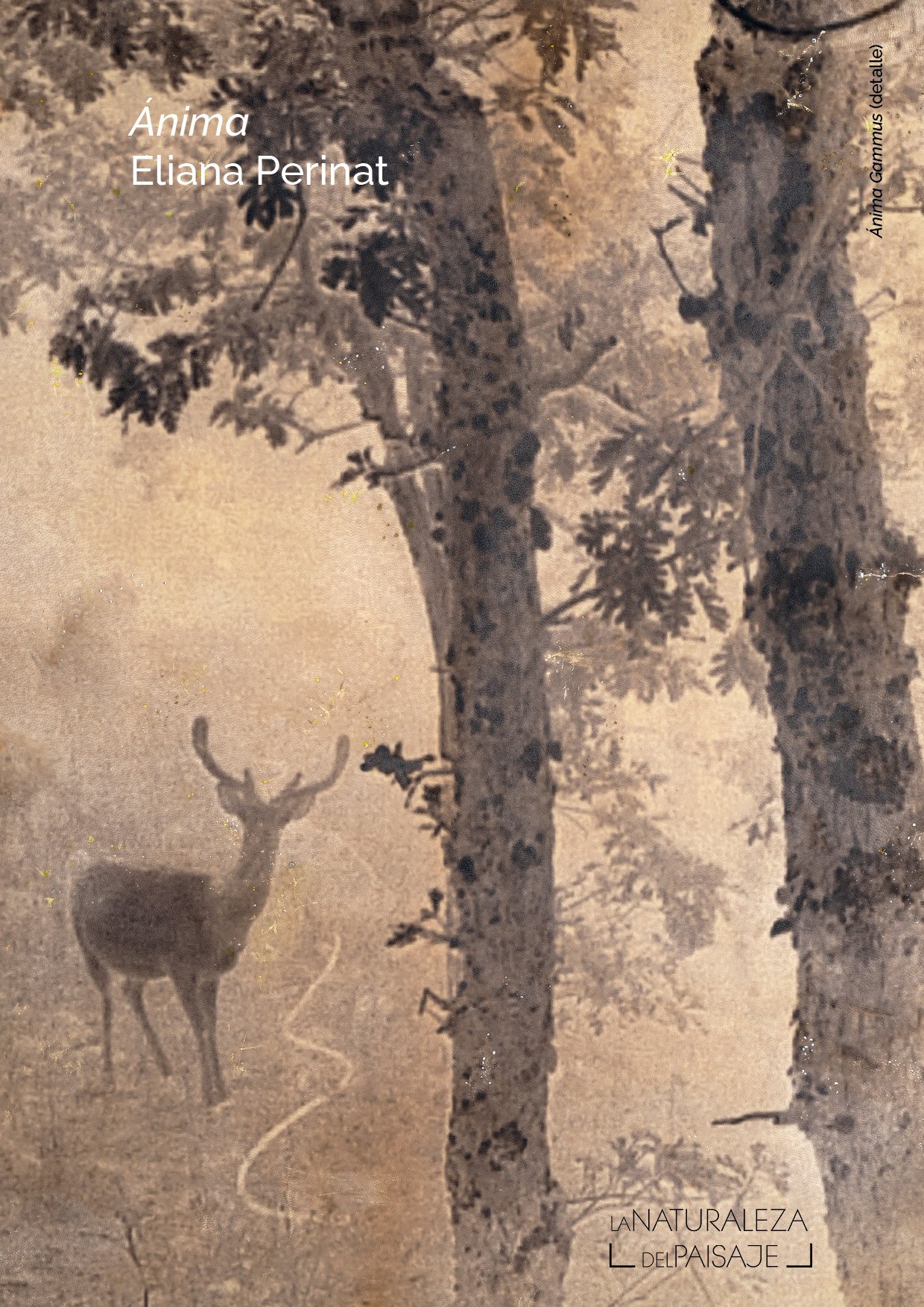
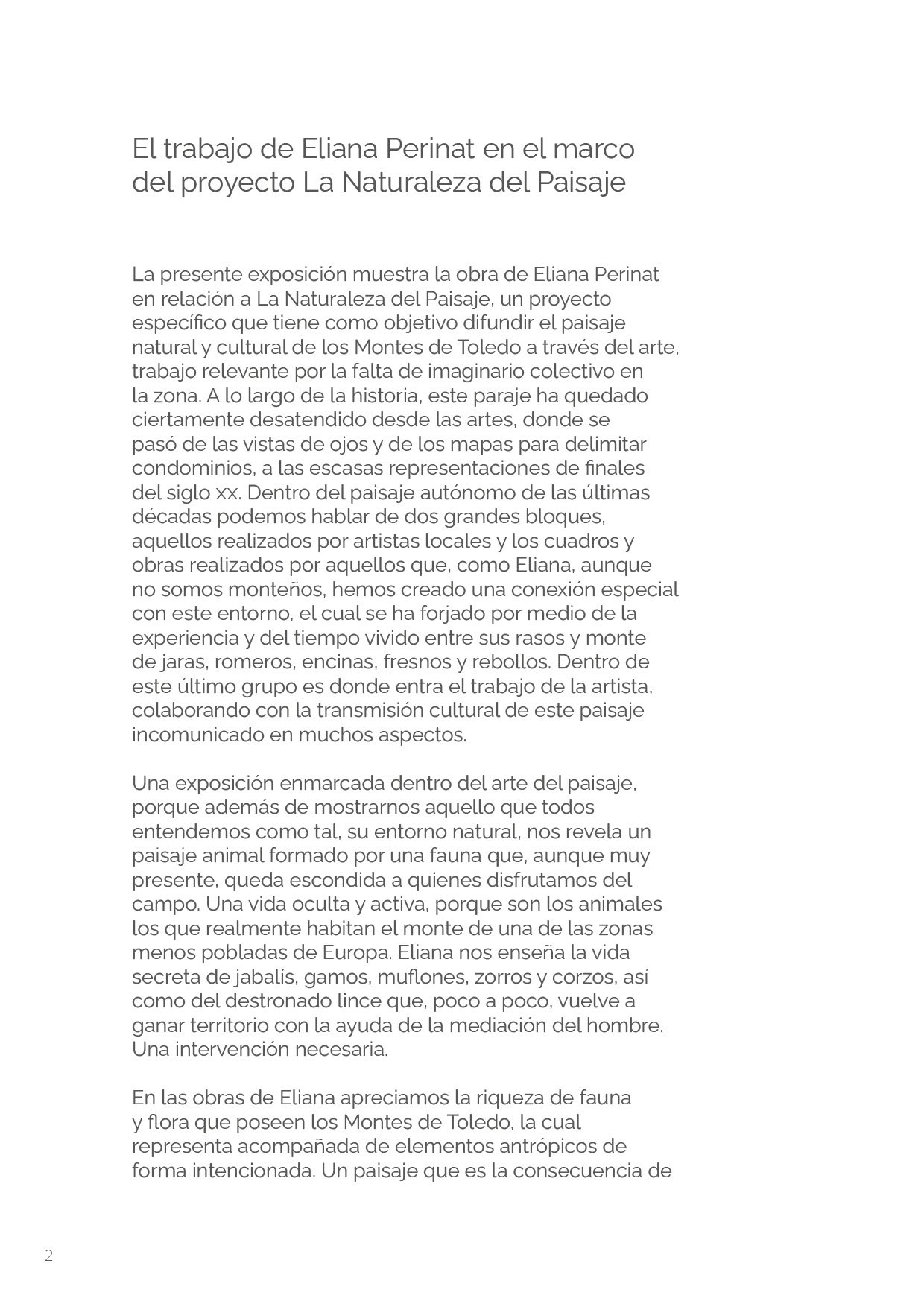
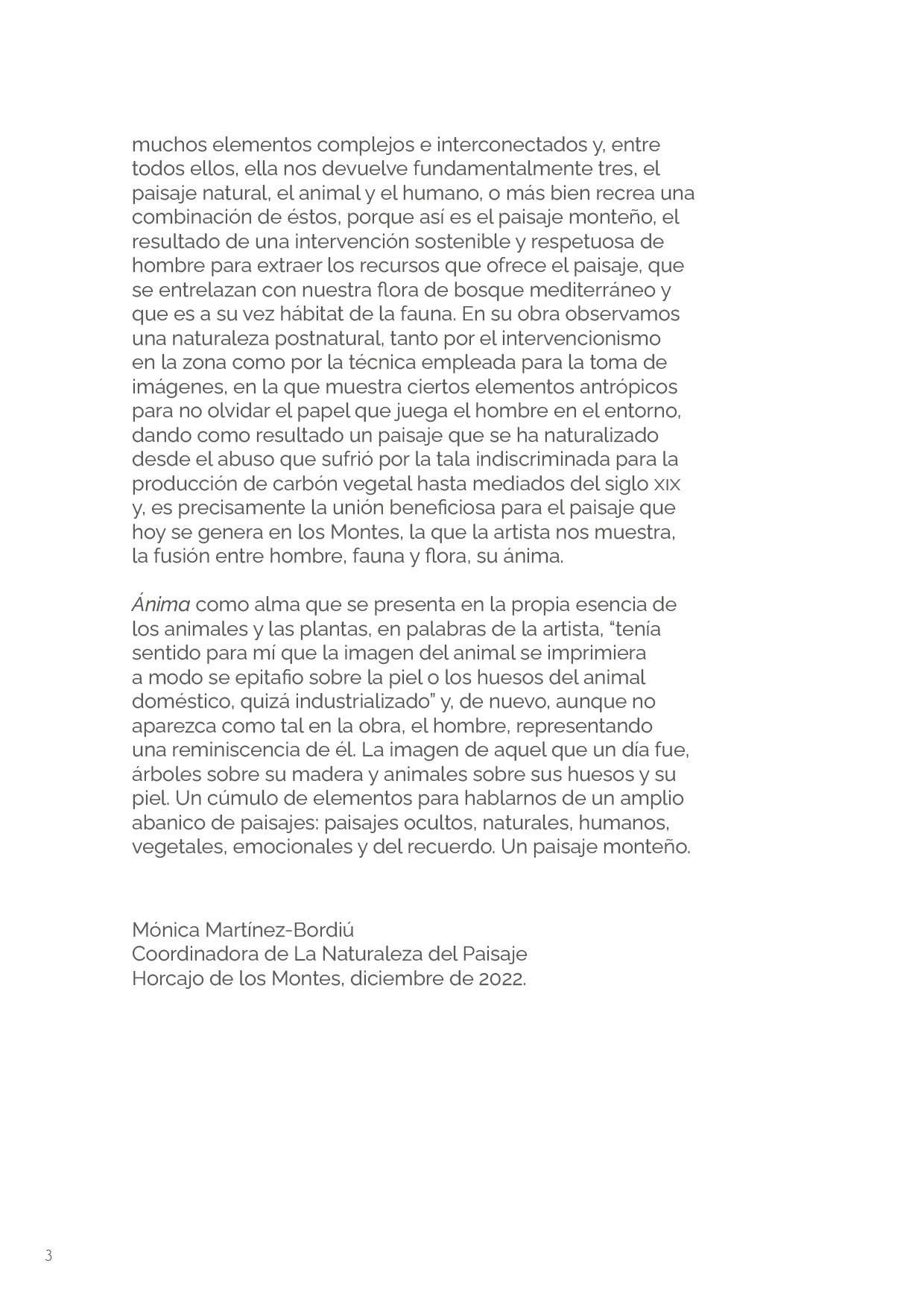

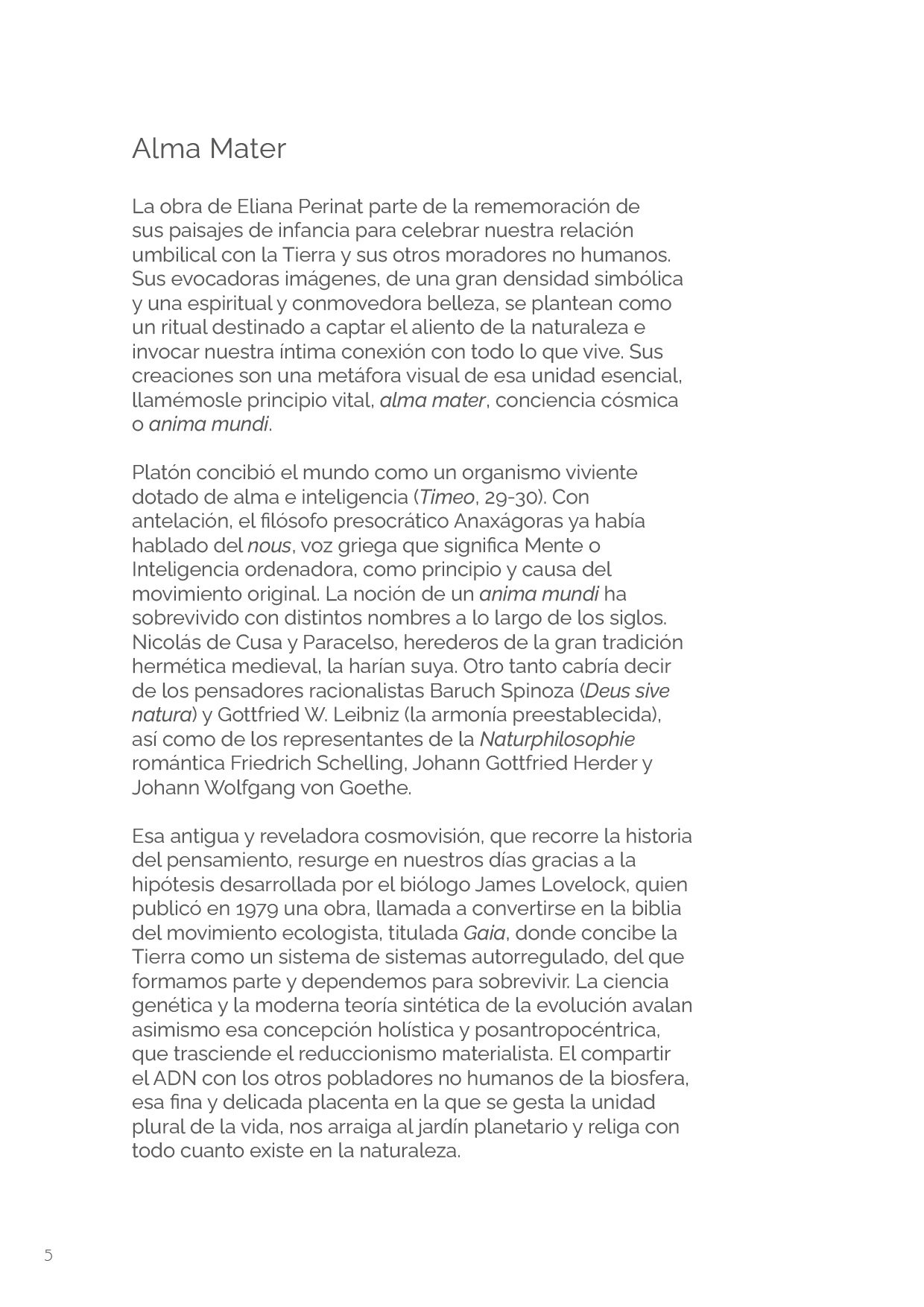

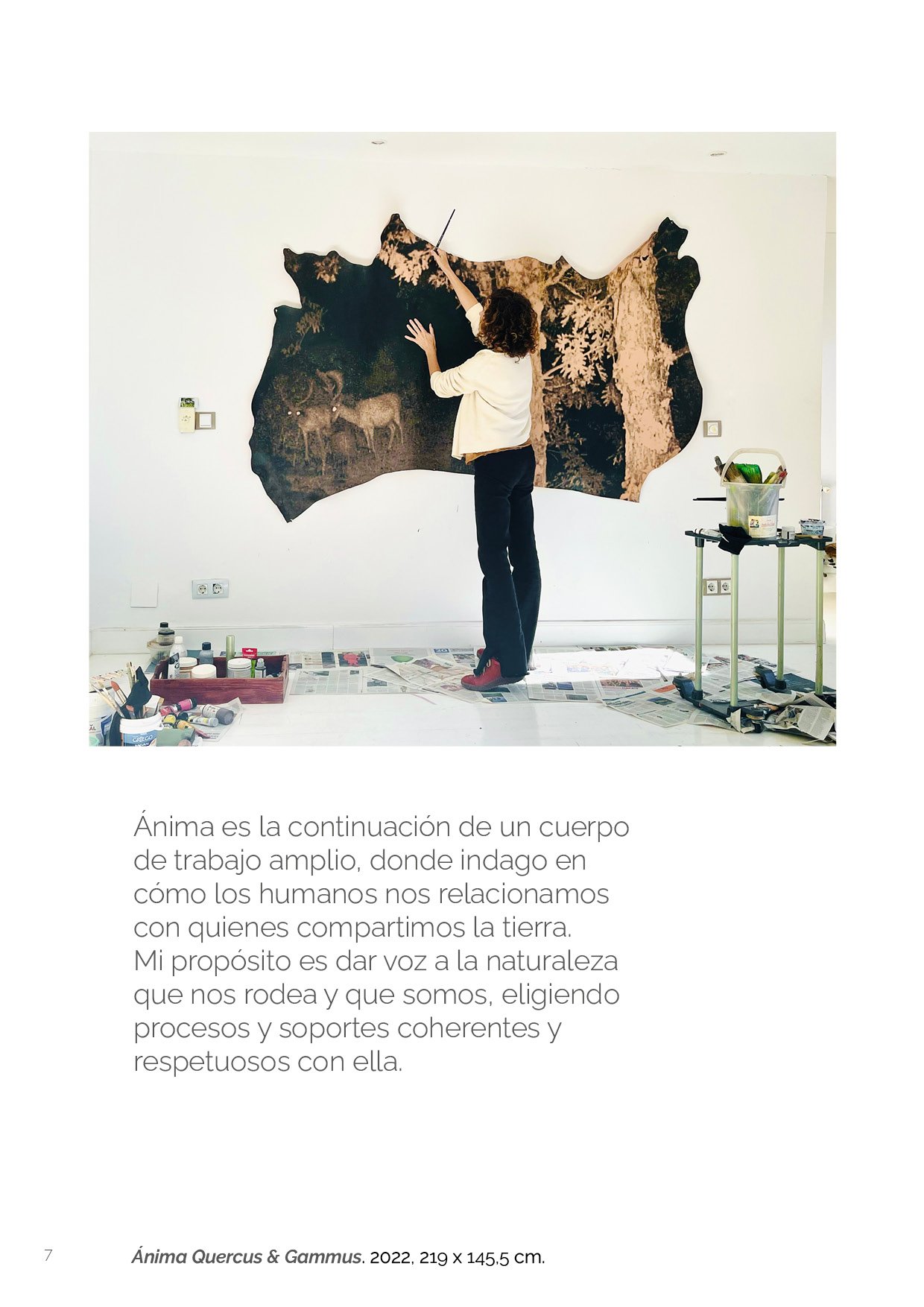
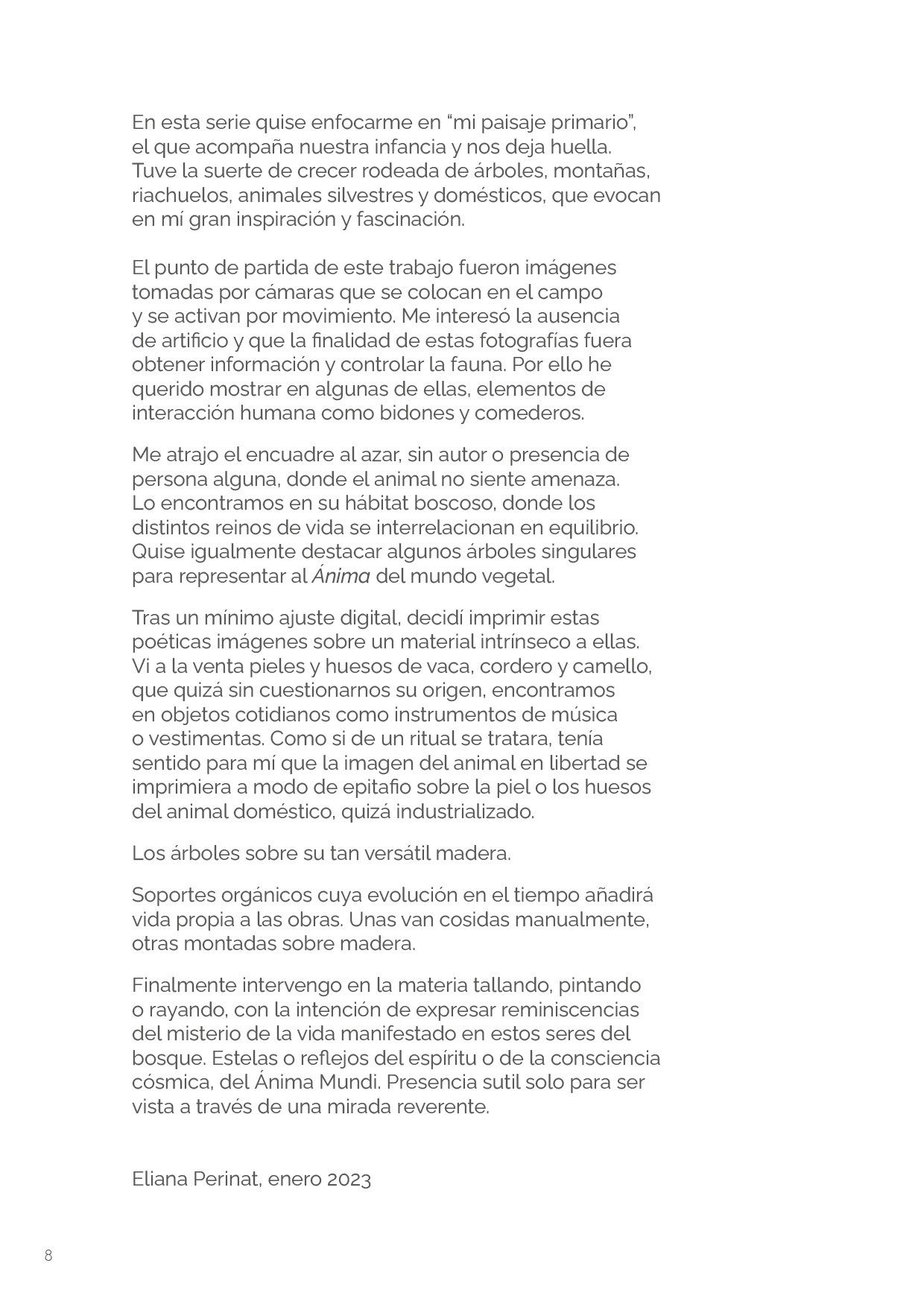
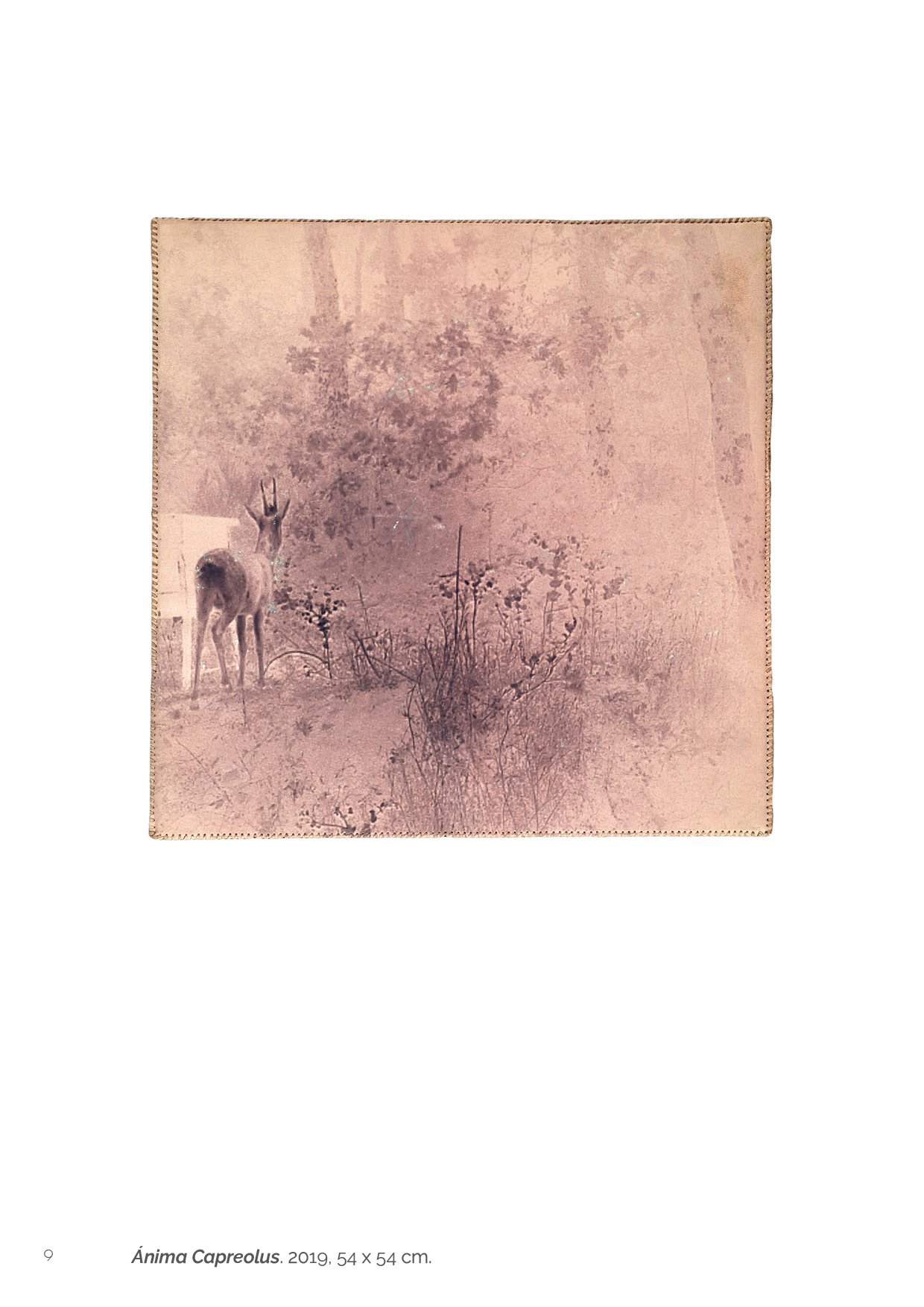
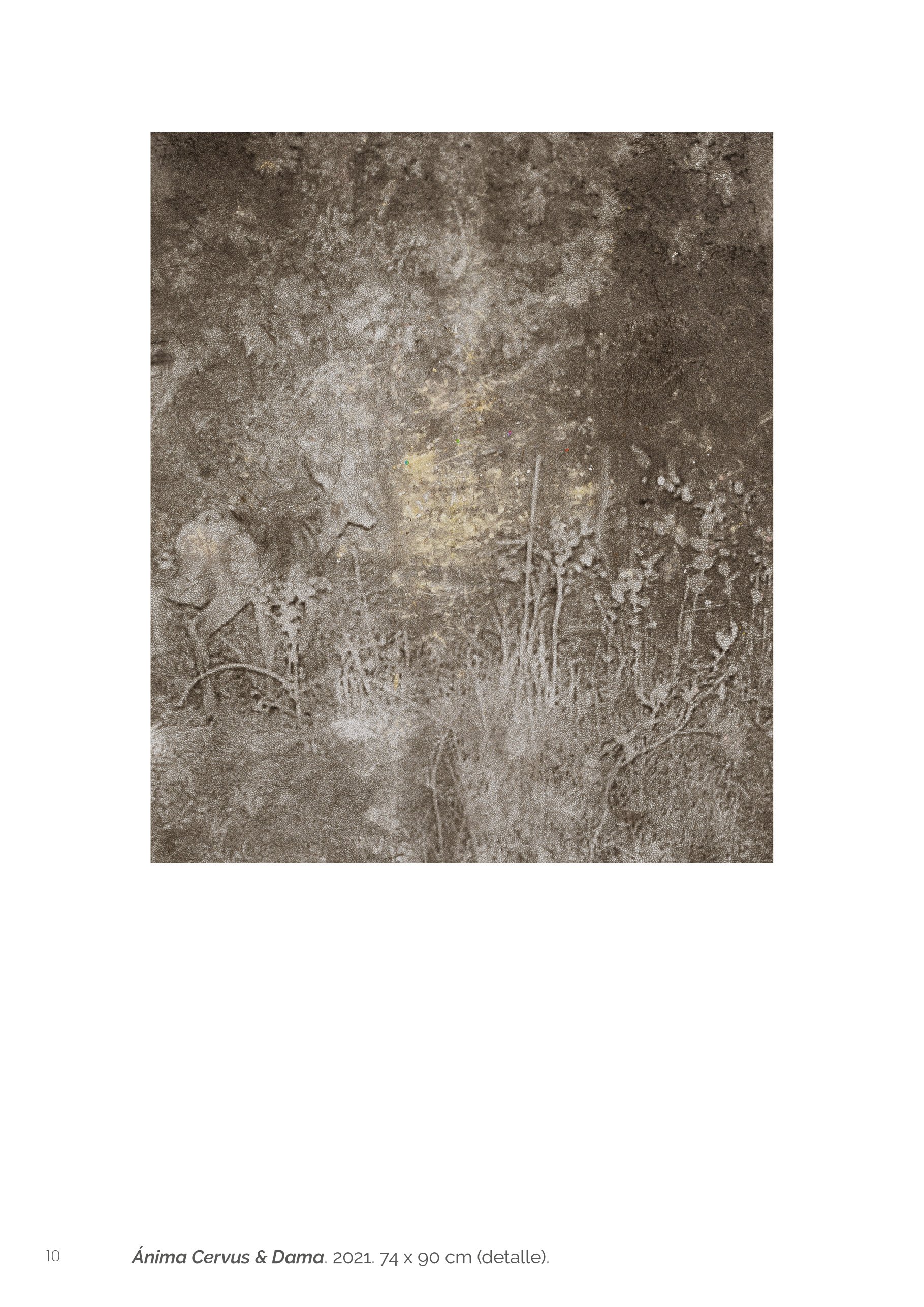
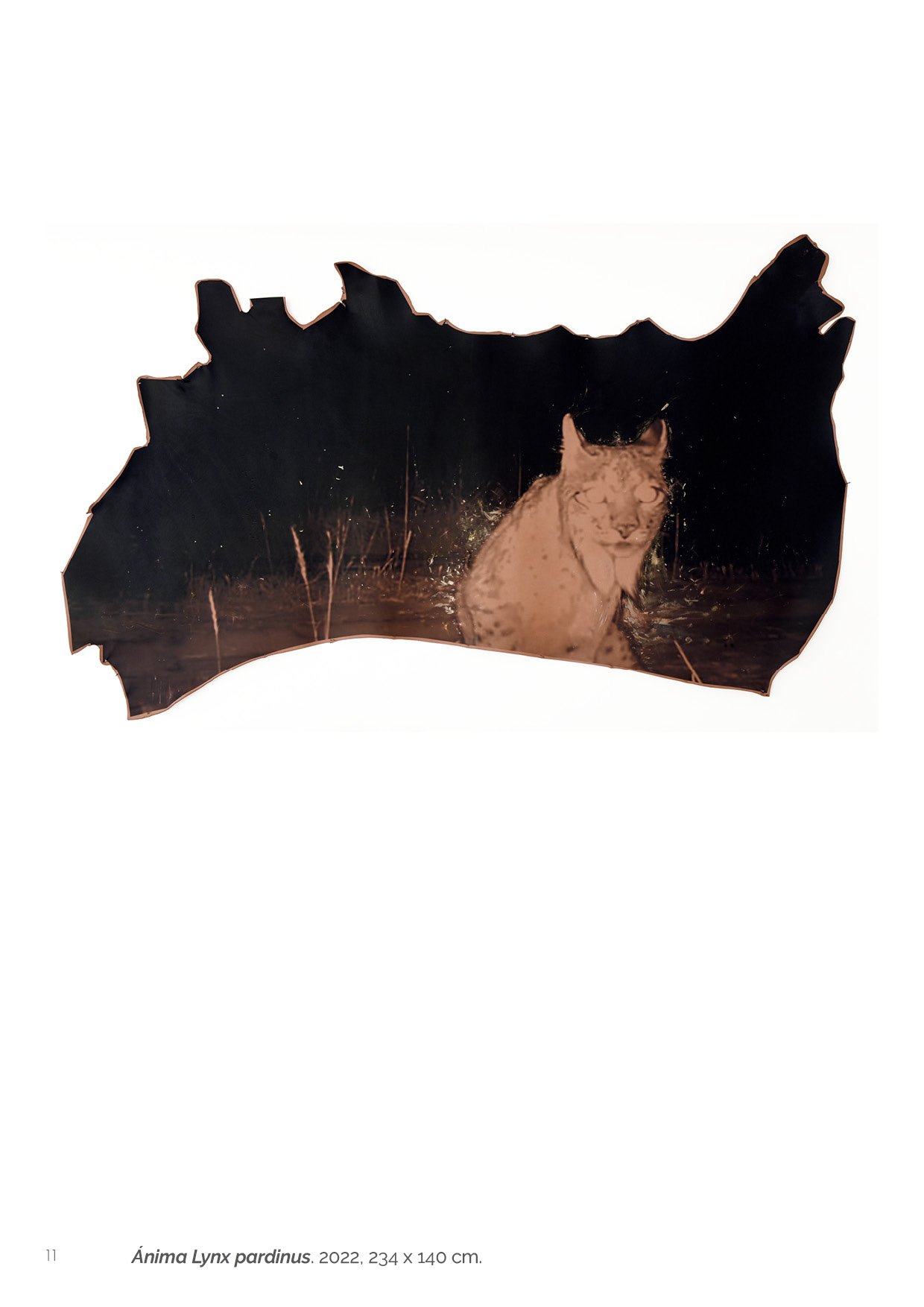





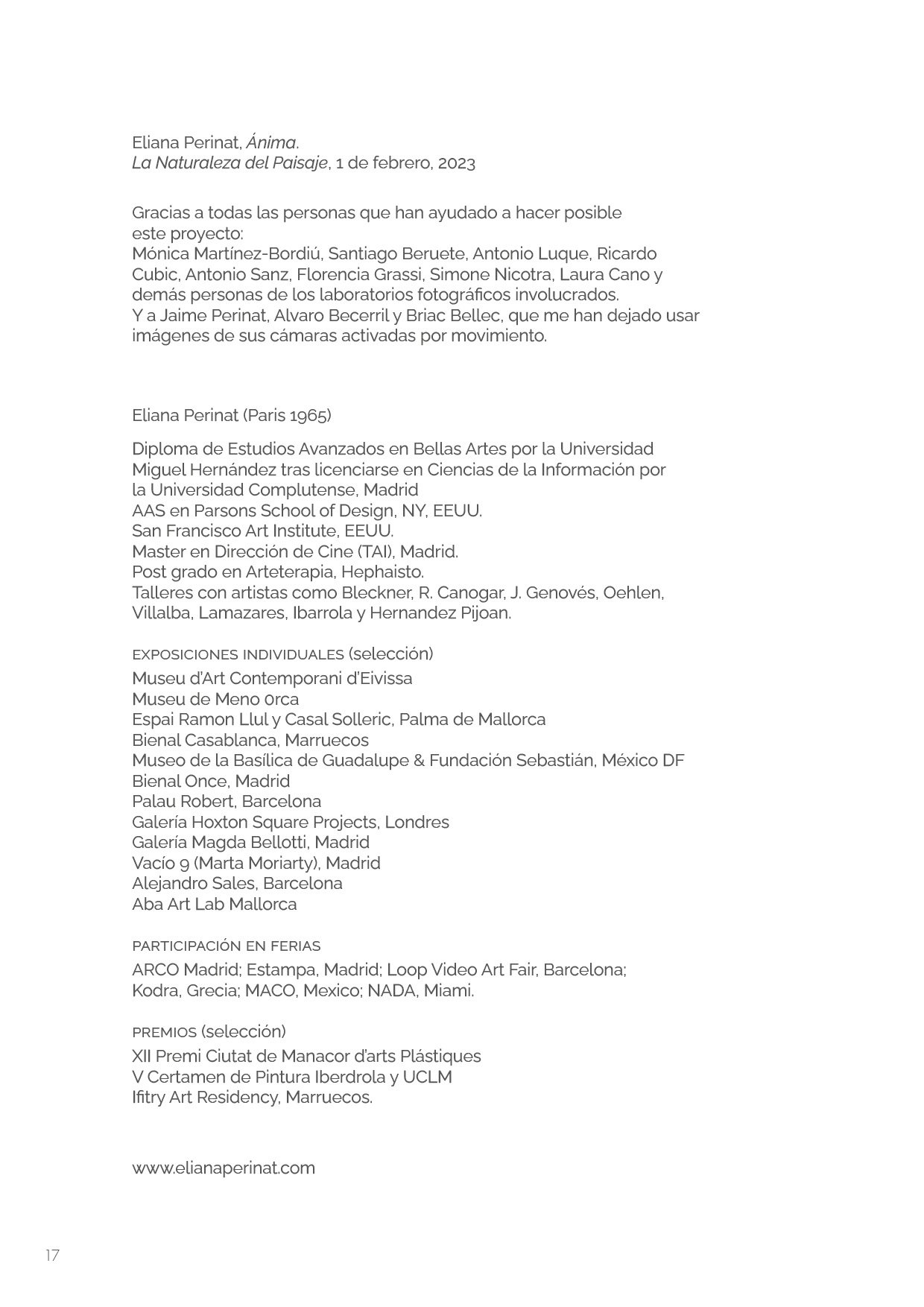
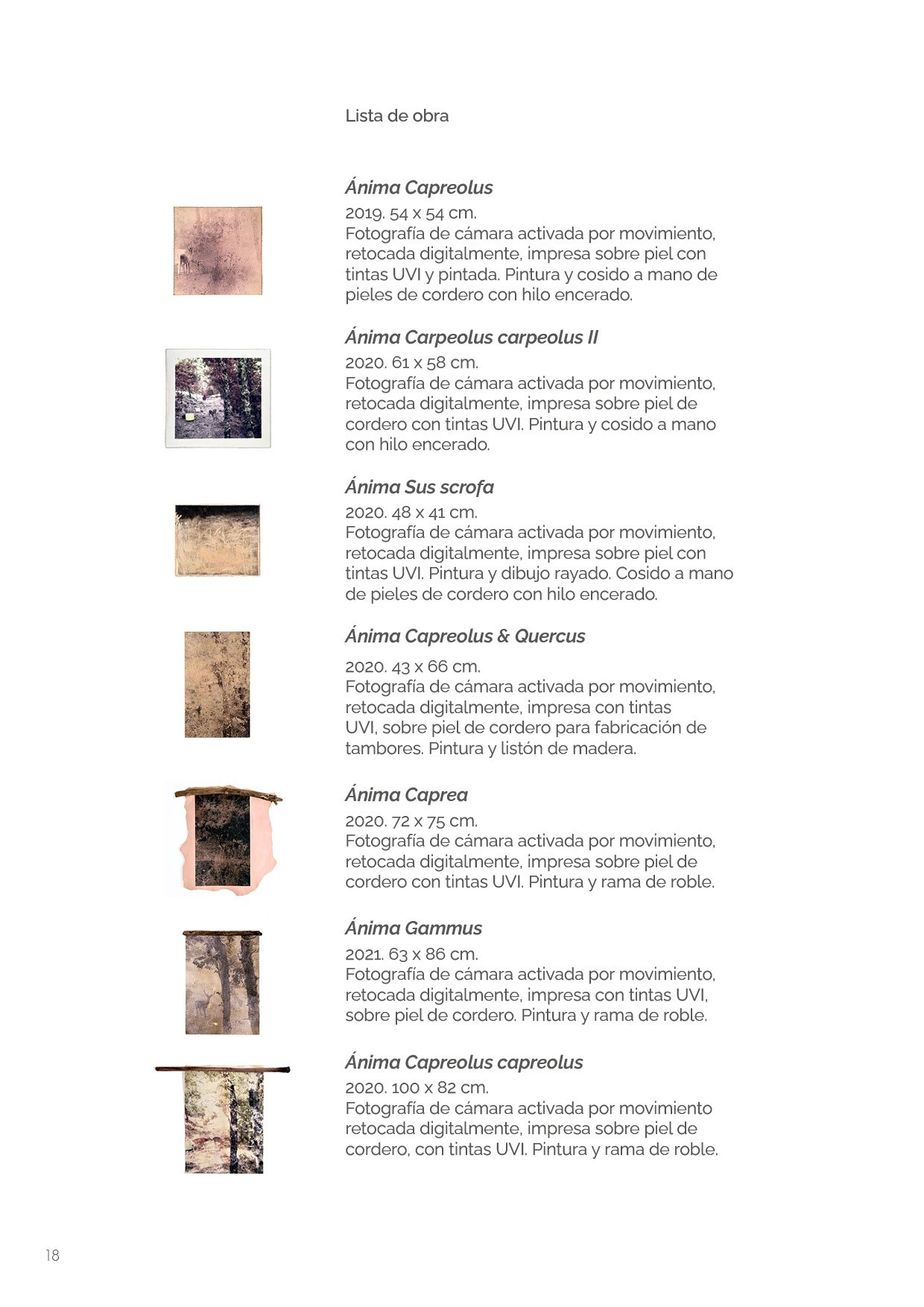
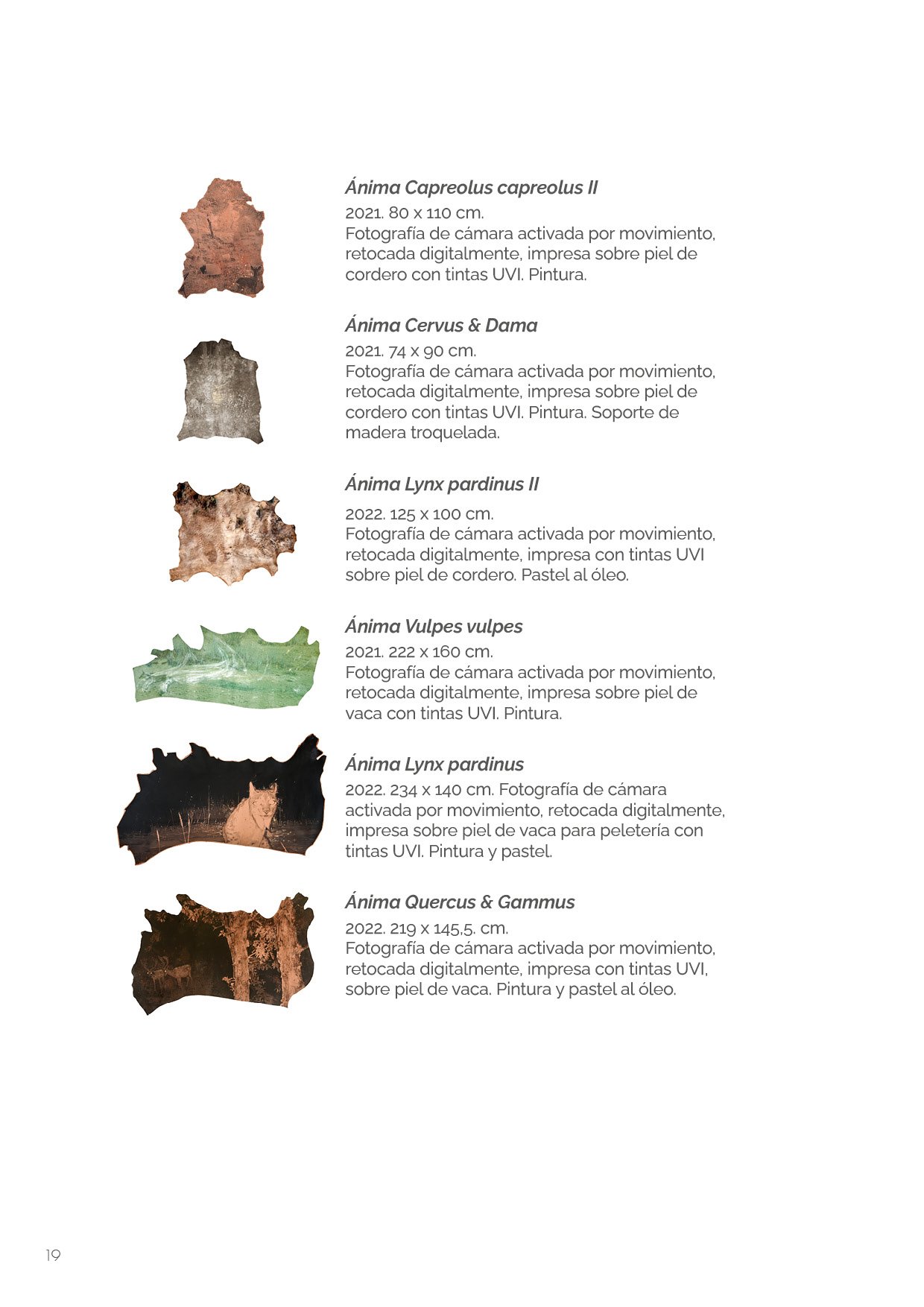
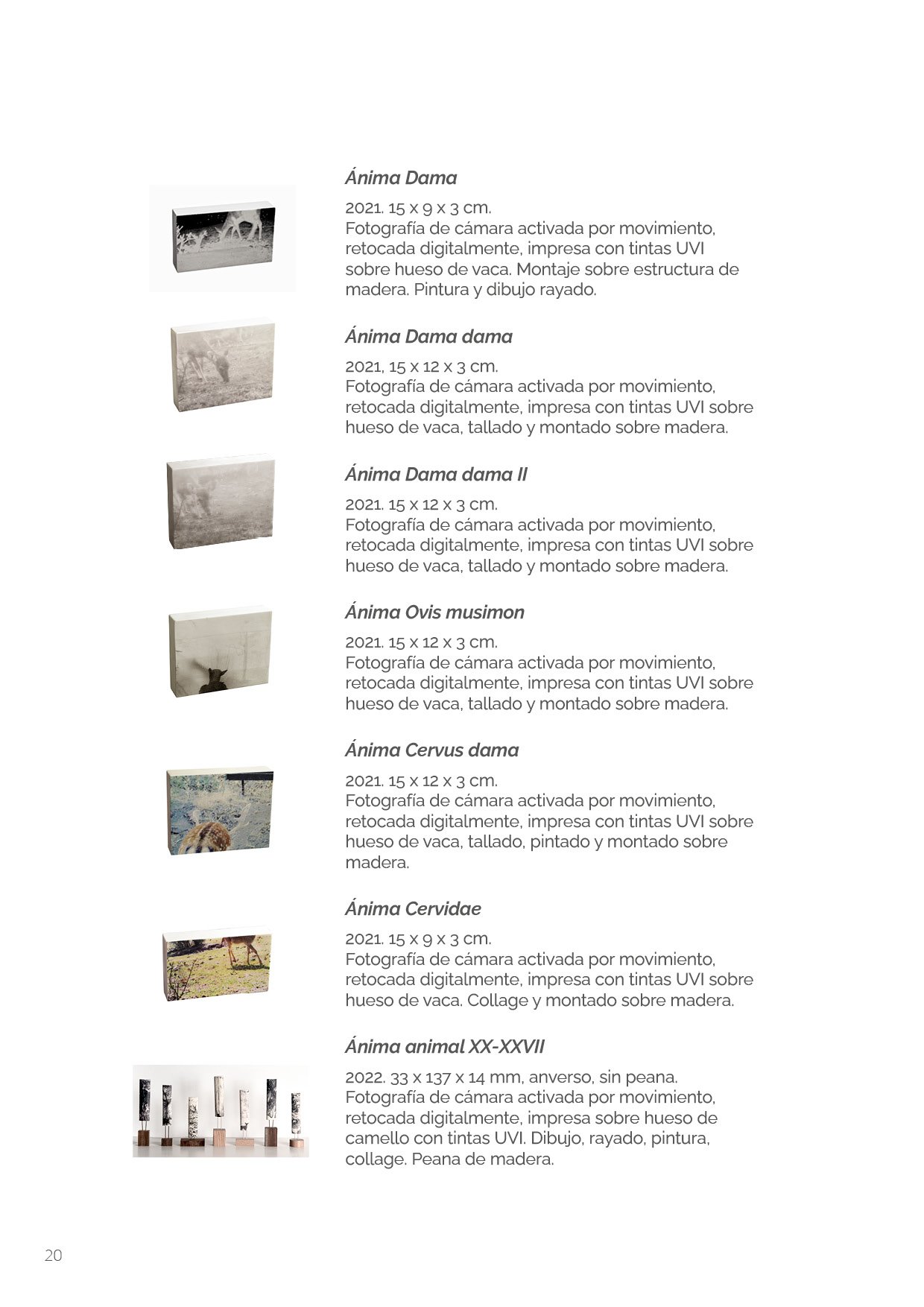

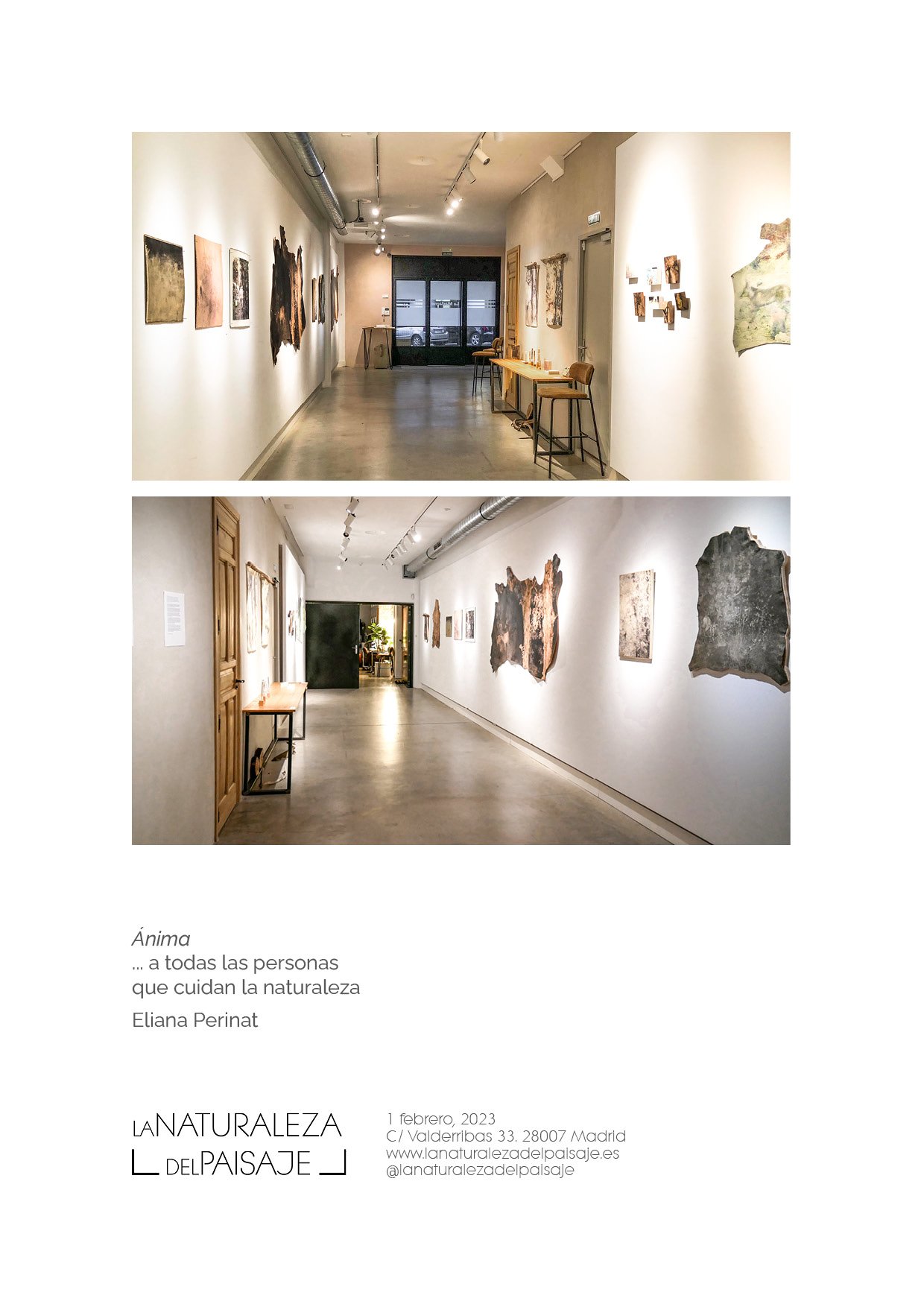
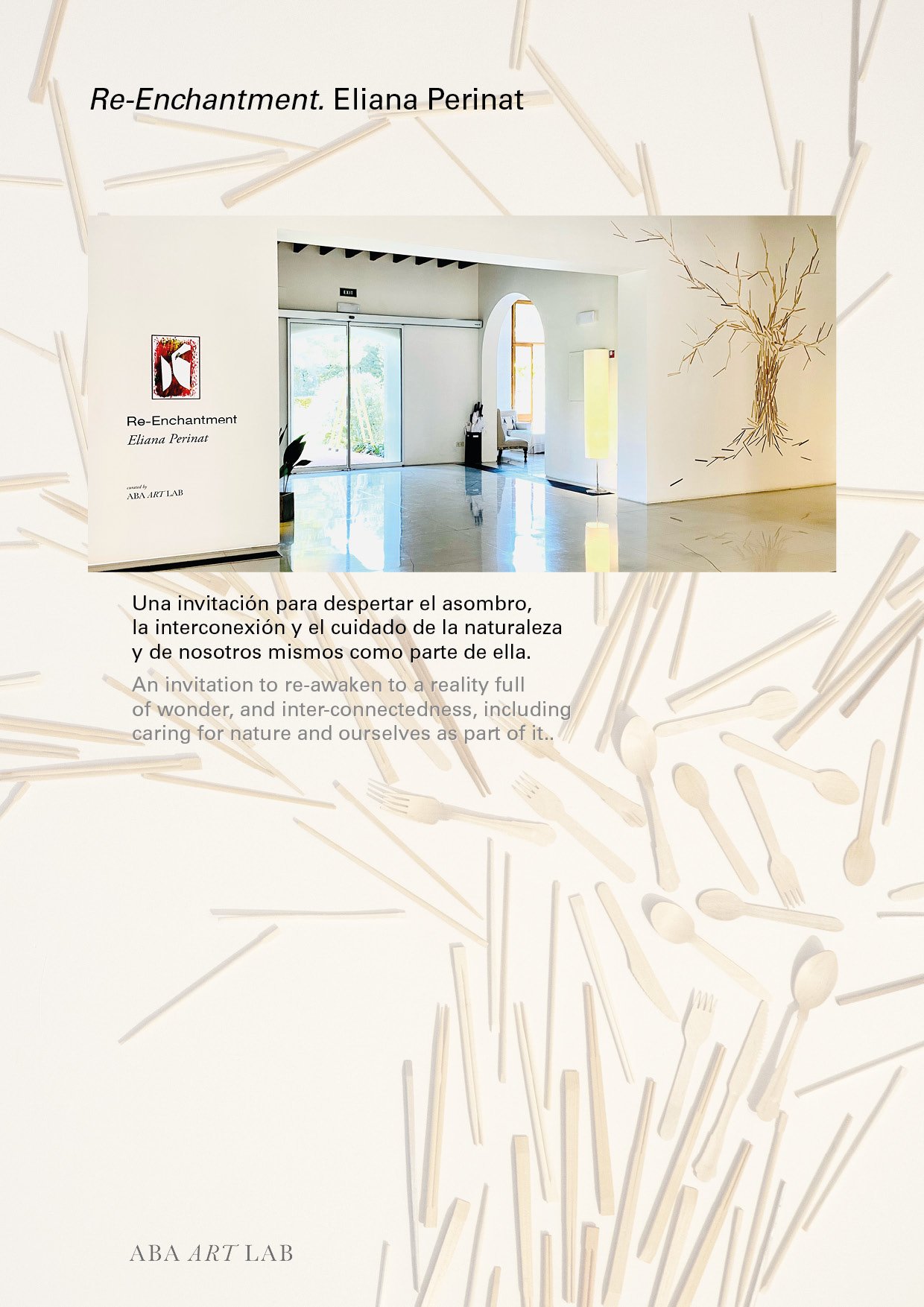
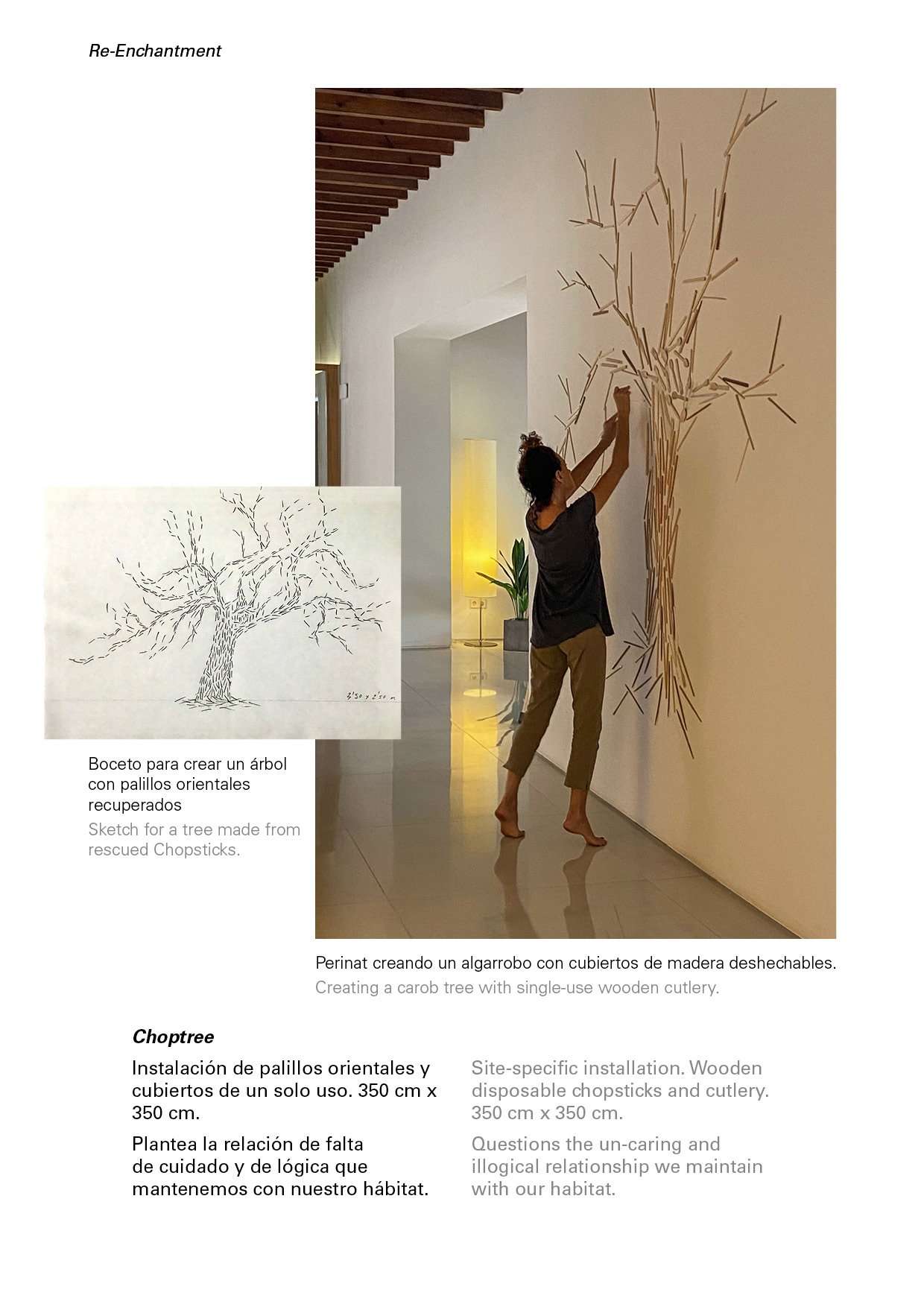
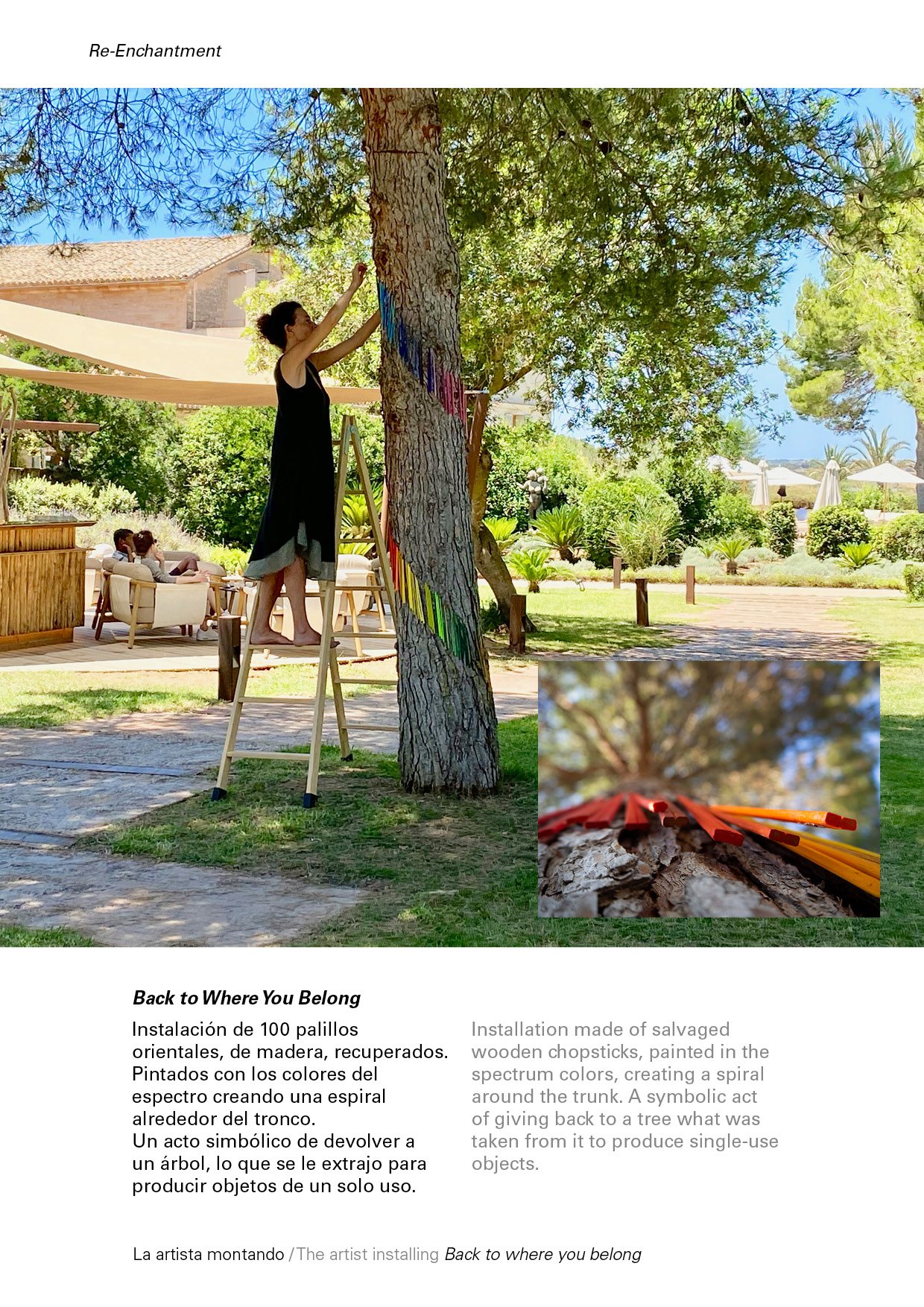
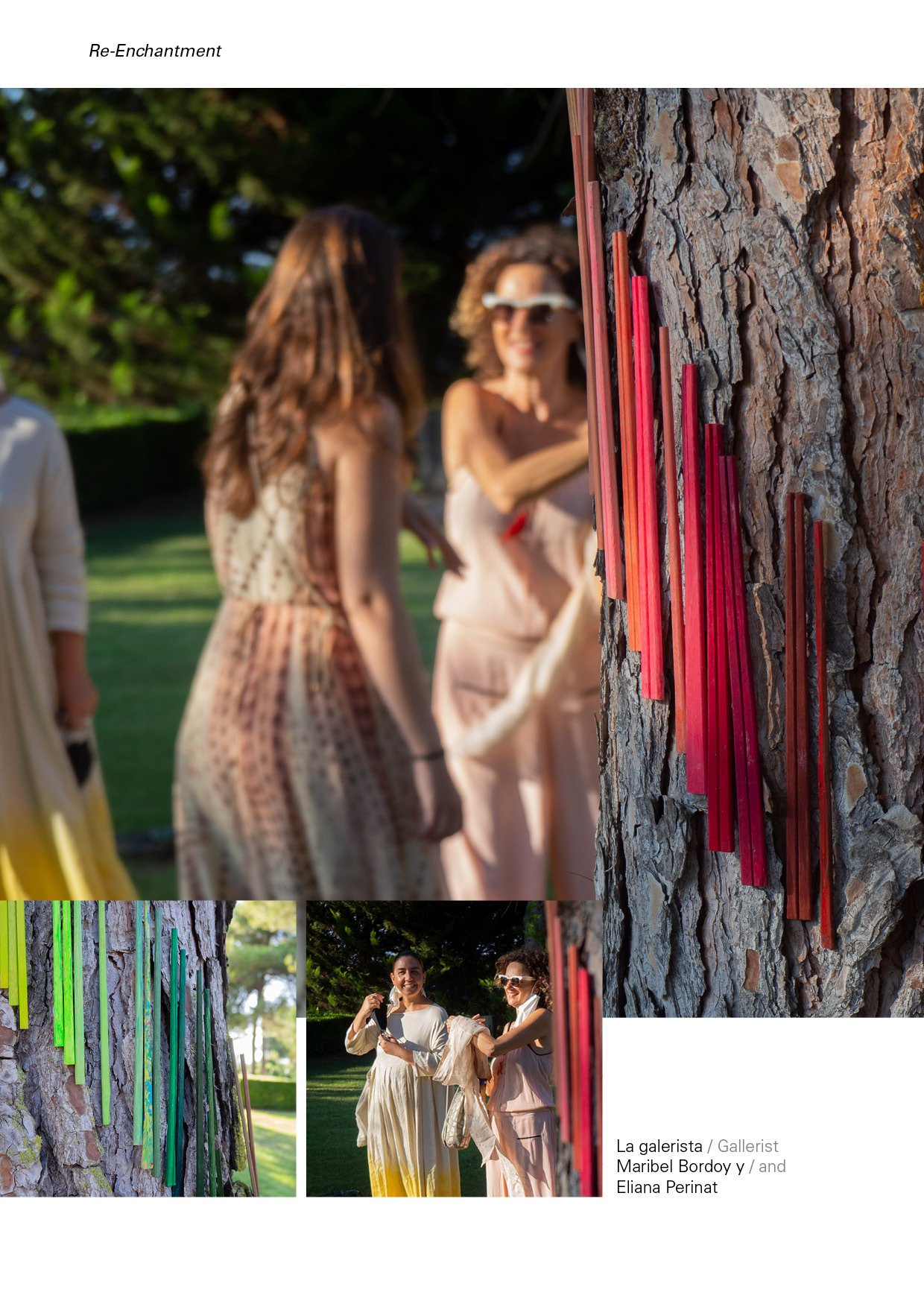
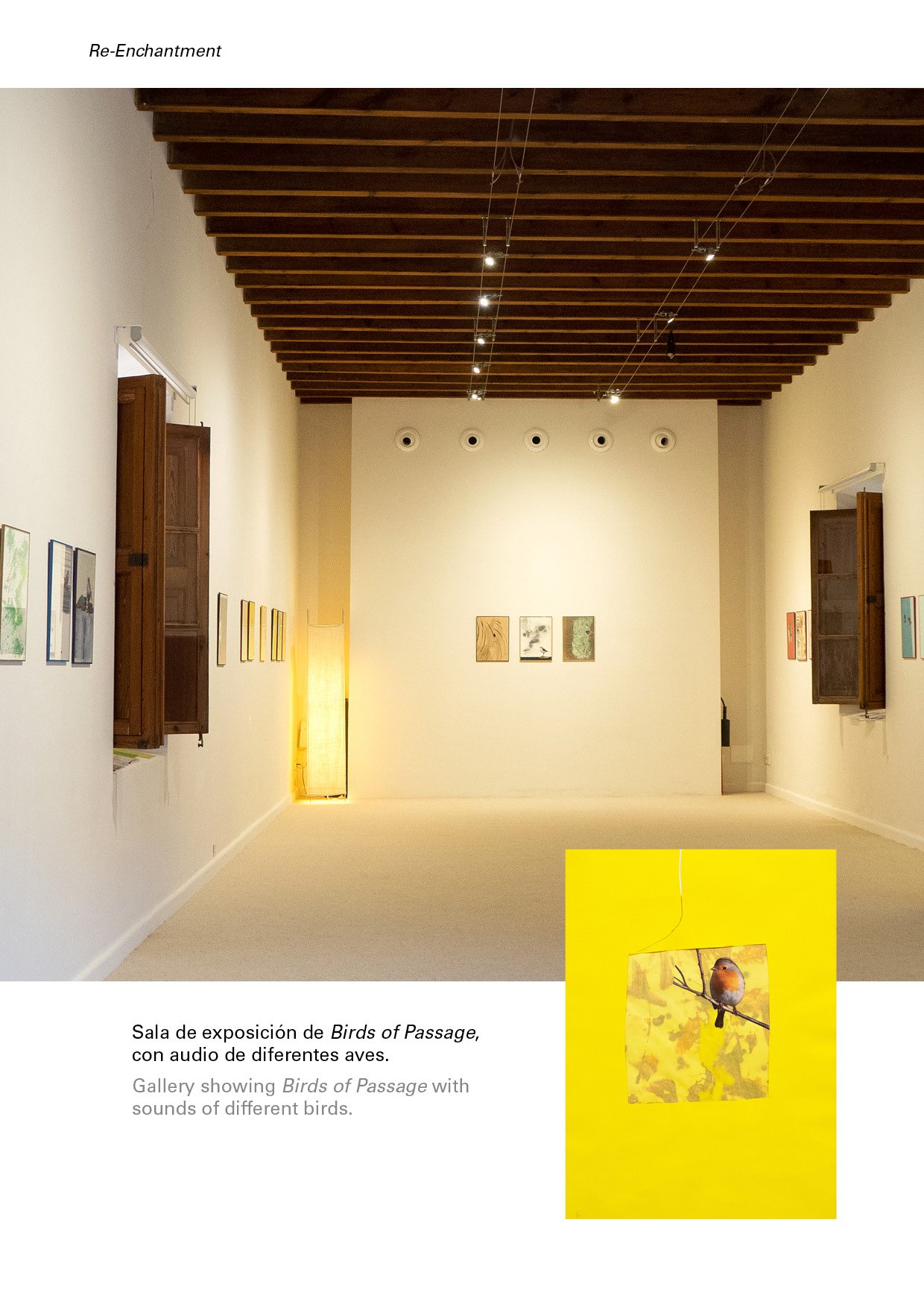
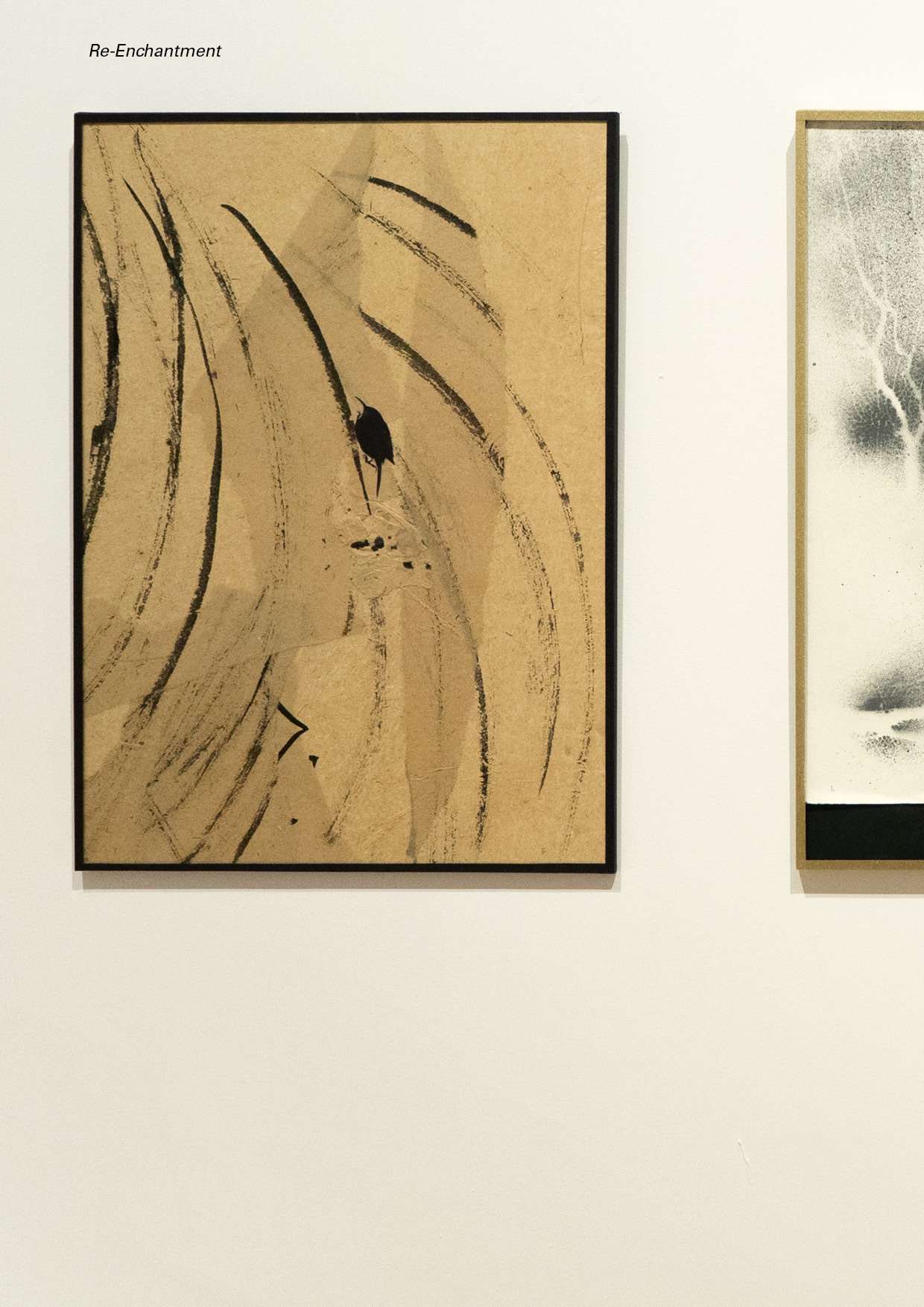
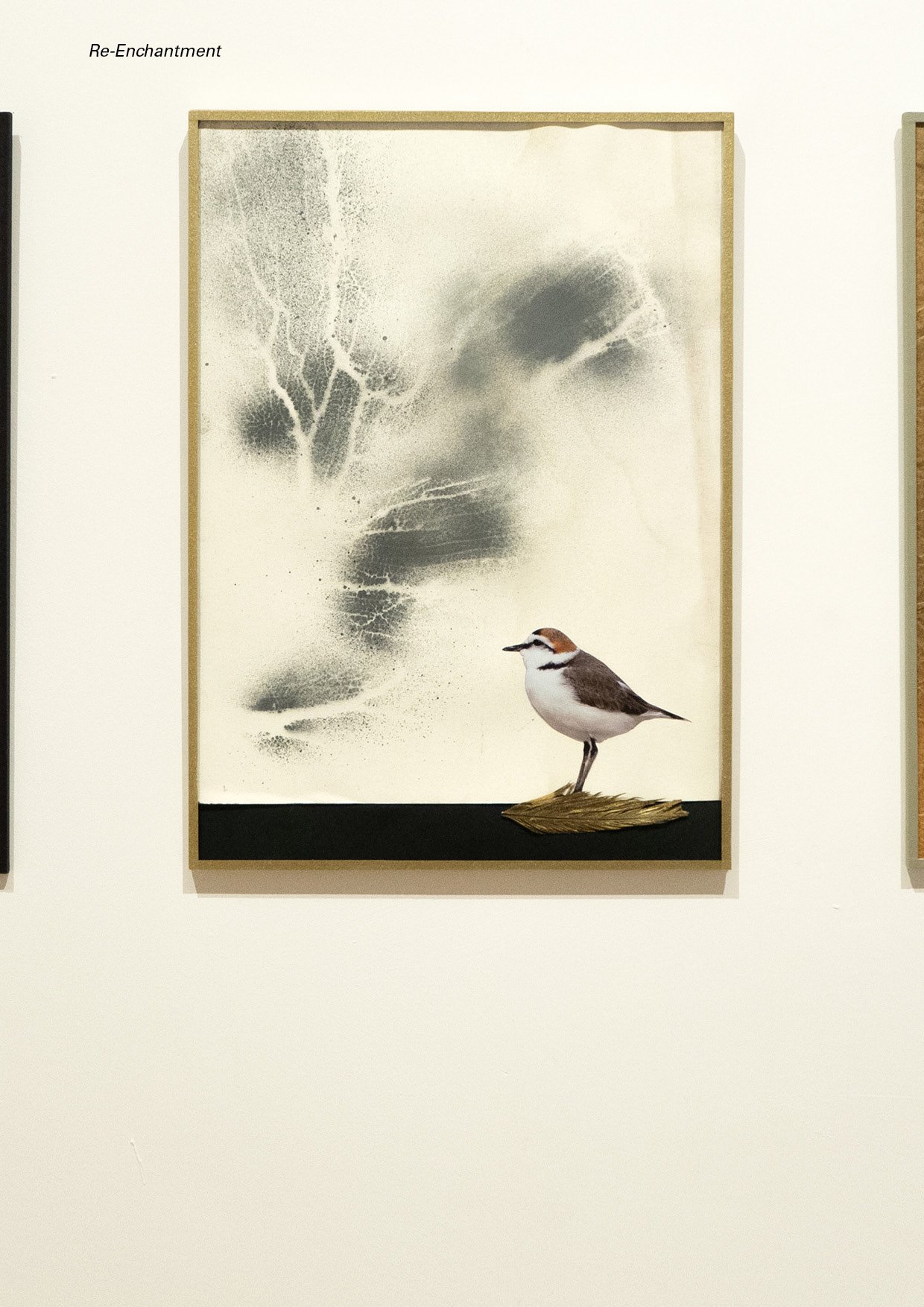
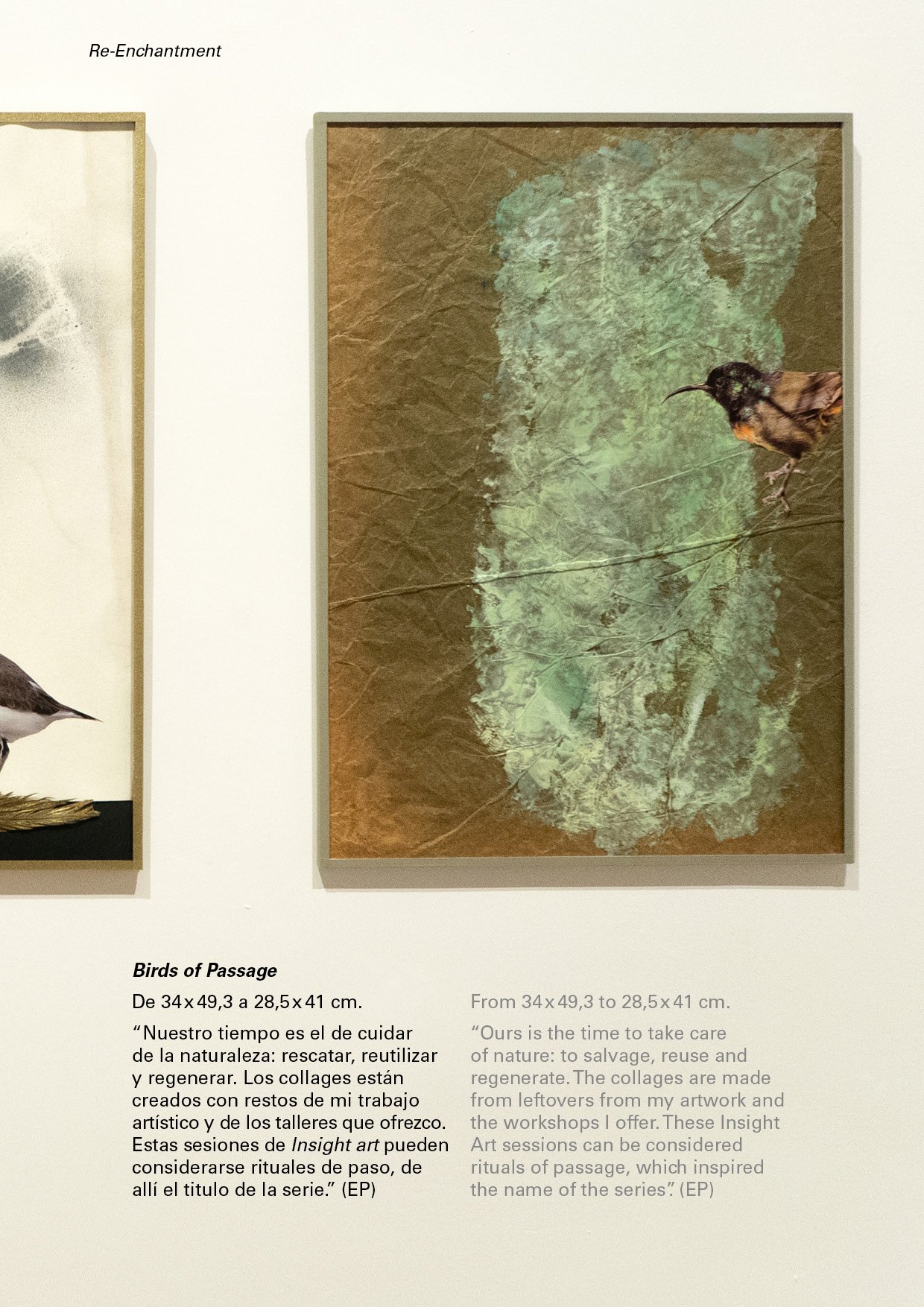
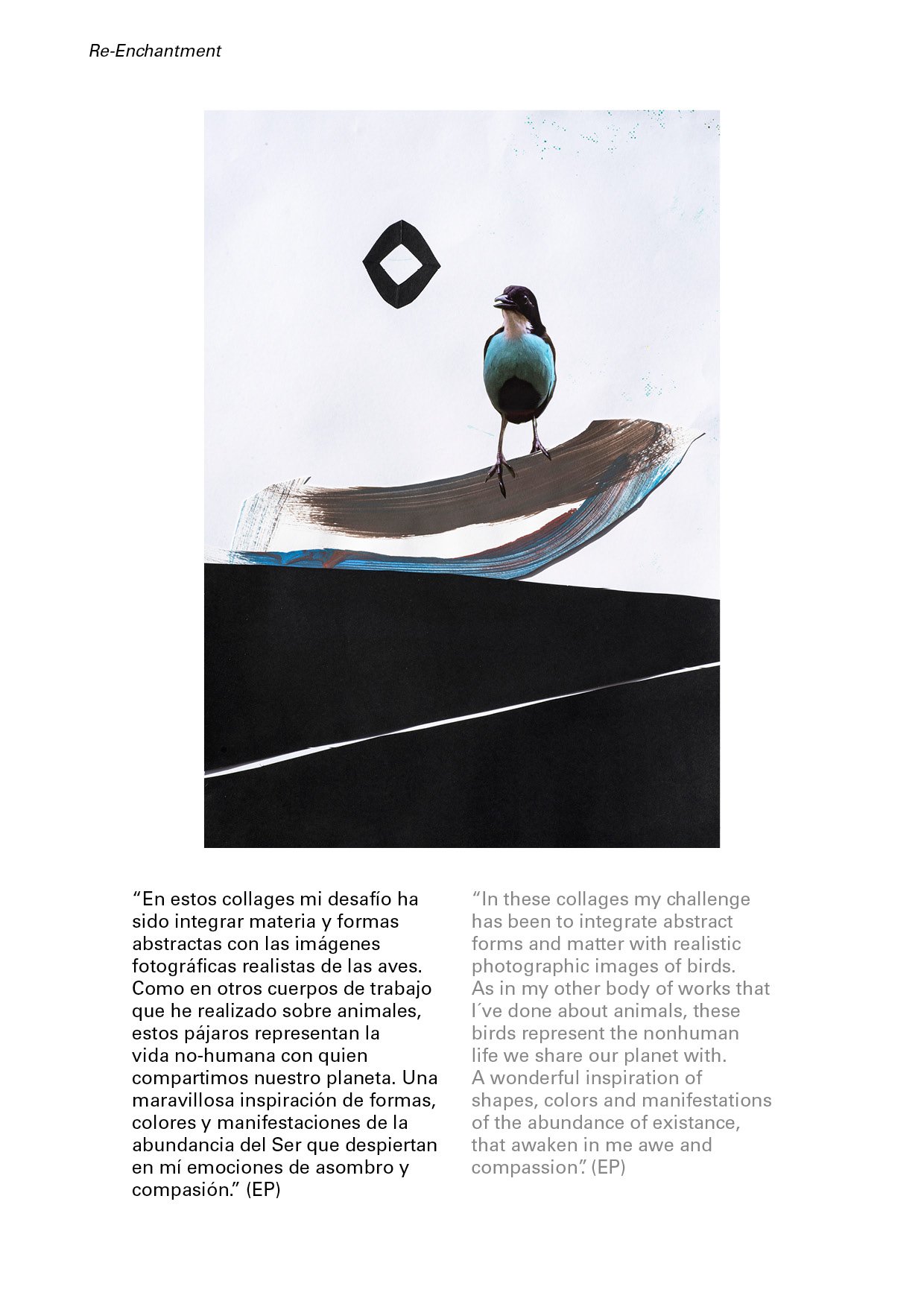
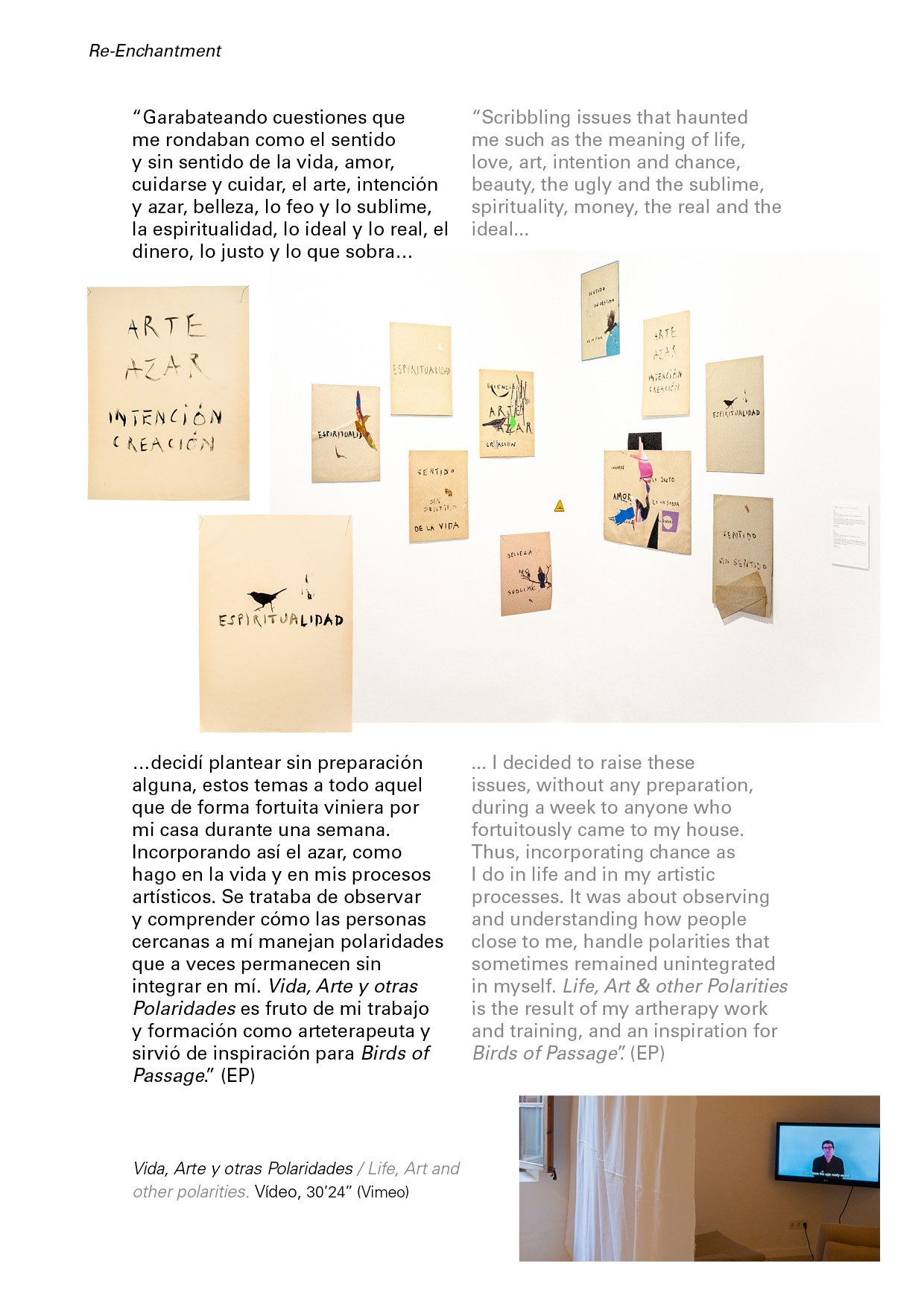
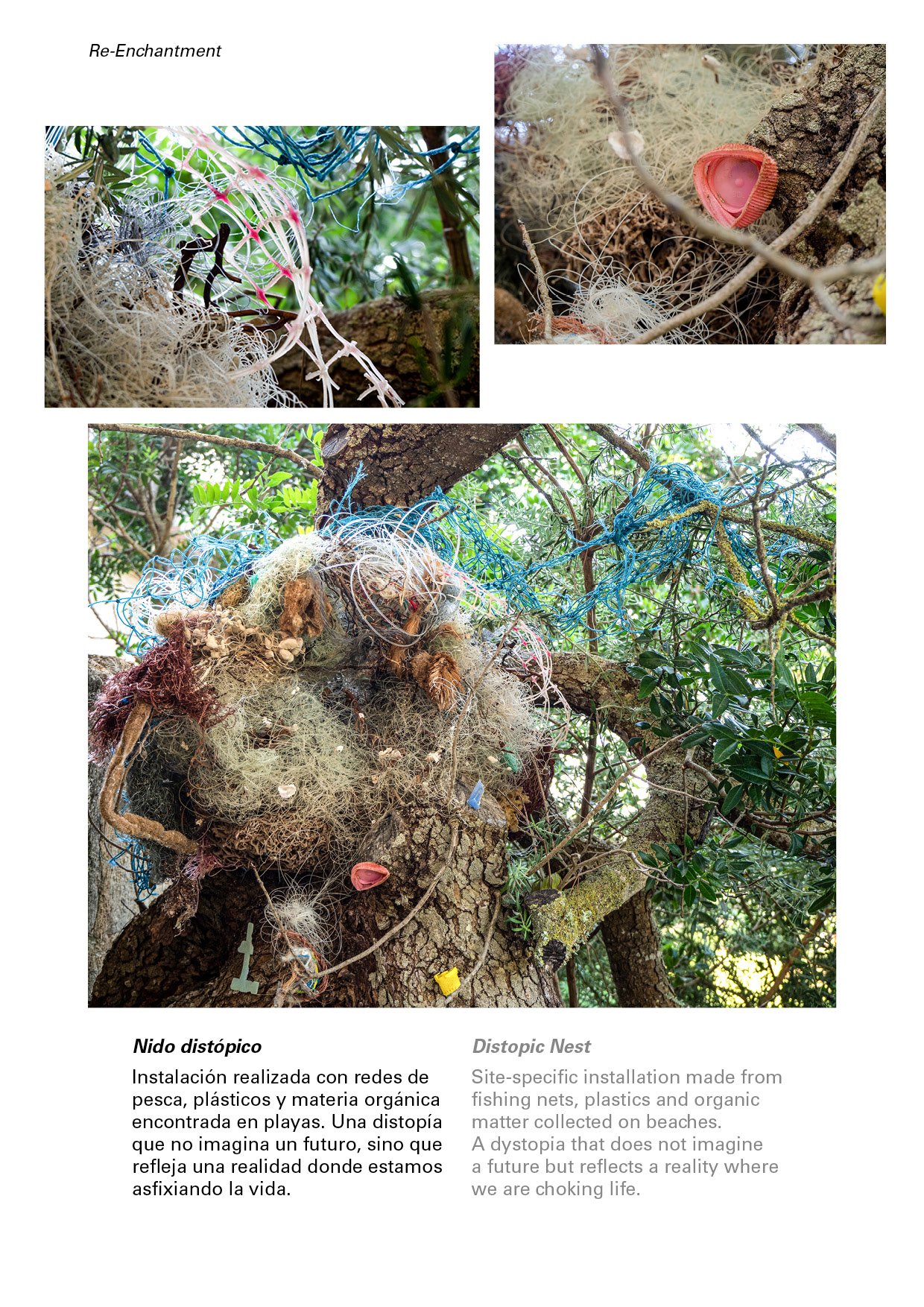
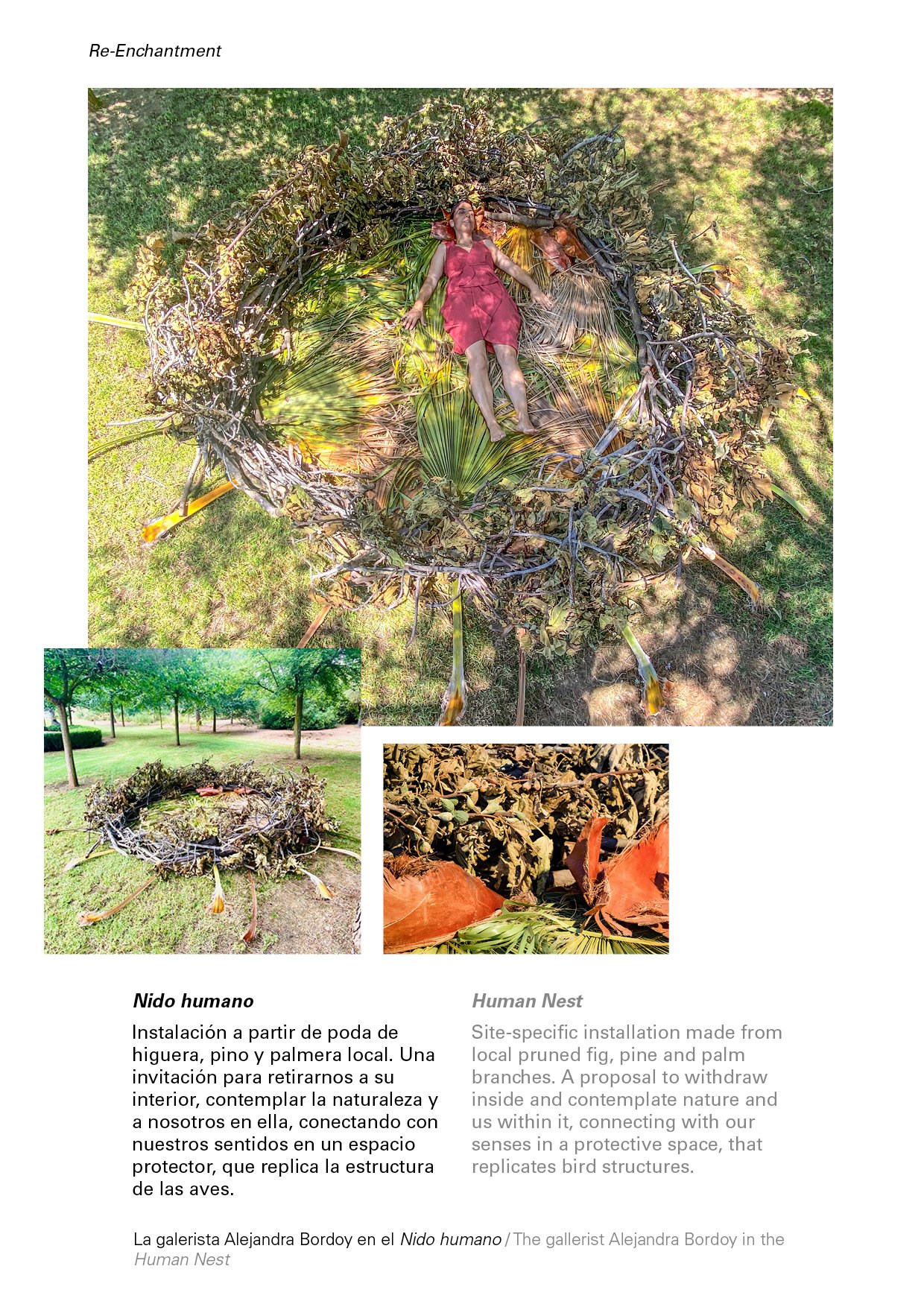

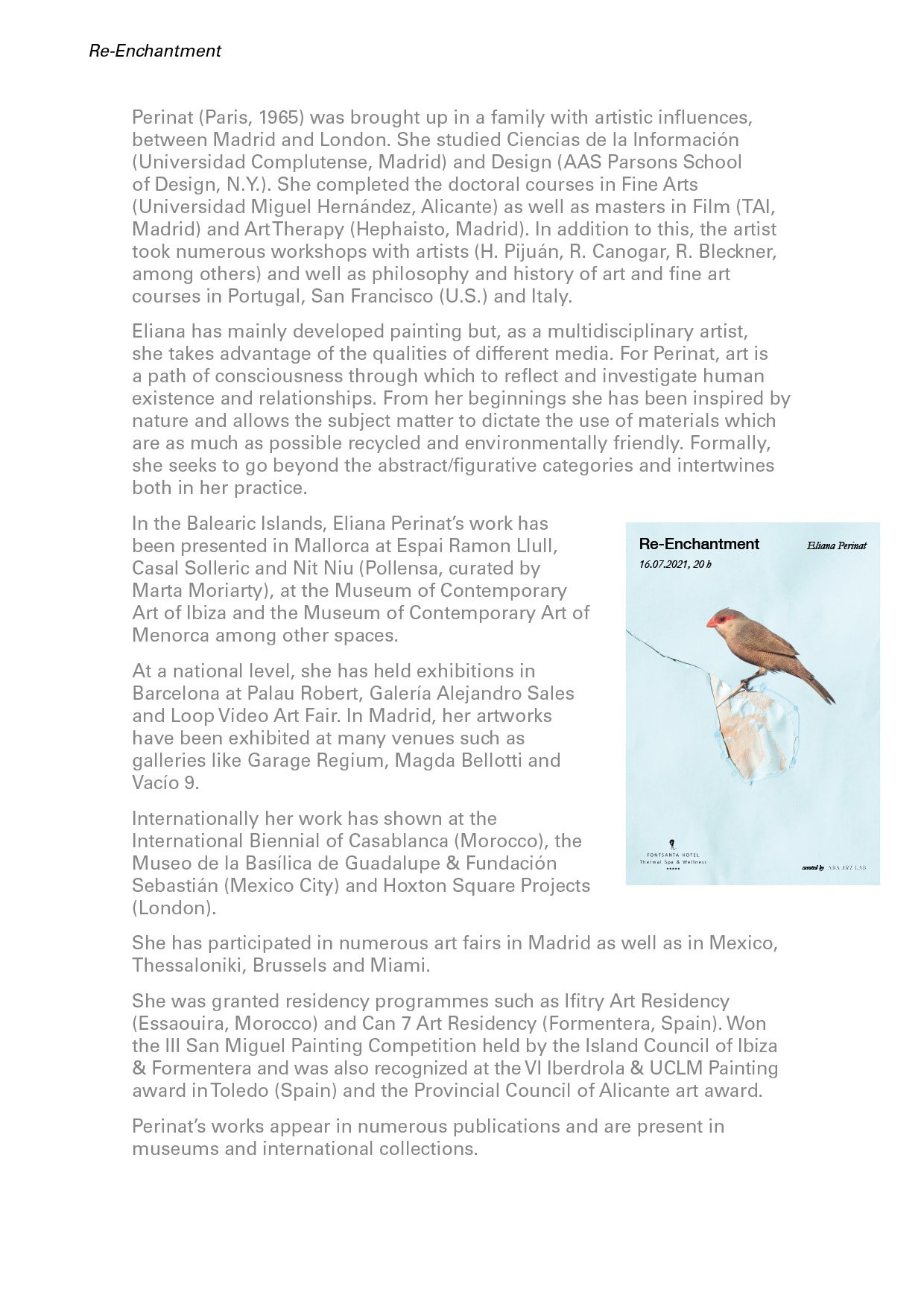
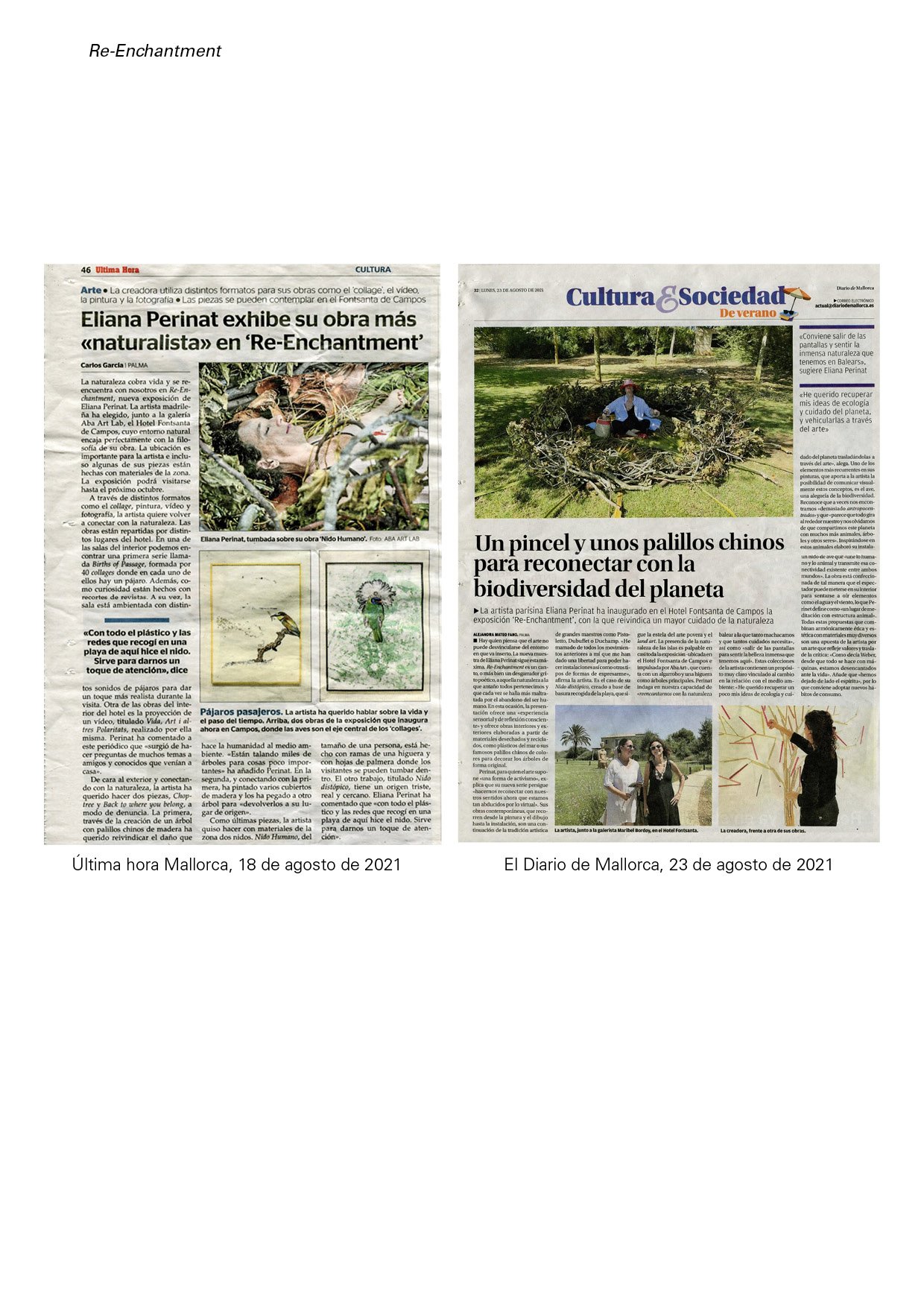
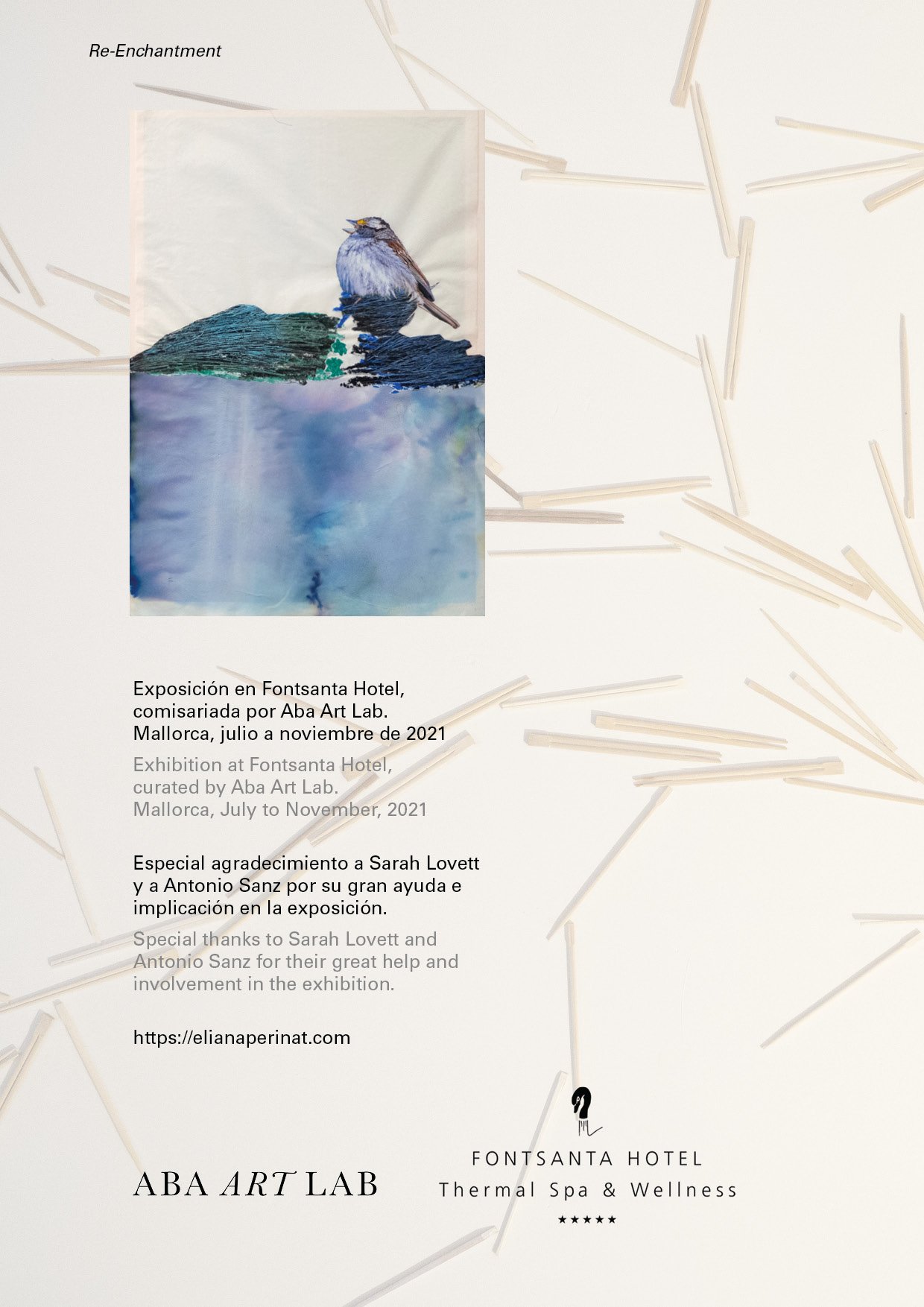
Out of joint.
[A minimal meditation on the “urgency” of Eliana Perinat’s aesthetics].
Fernando Castro Flórez
The Shakespearean tone requires more than a rhetoric on the cannon. Its powerful capacity to revise myths (collective stories that become relevant as a choreographic pedagogy of “what was, what is and what will be” in recovering the inspiration of the muses) still affects us, especially since we live in times that are out of joint. The time is out of joint, we have nothing left but “counter-times” and a tremendous wear and tear that prevents us from gathering around a flag or around Malevich’s black curtain; instead, it keeps us outraged, placed between a depleted reality and the bio-political control of a blatant “state of emergency”. It is under these critical situations (a strict dilemma, where the past has not yet disappeared and the future has not yet emerged, where Gramsci’s morbid symptoms run free) that art, with its paradoxical “power” (caught between the market and the remote possibility of propaganda) faces a well-known revolutionary question: “What to do?”. We obviously do not expect an academic answer, as would be the case with the so-called “institutional conceptual” approach, which for decades has settled into a museography where what is considered “radical” is nothing more than a masquerade for self-indulgence, nor in a sheeplike extension of the easily digested catch-phrases of demented talk shows. In an era that is swamped with “archive aesthetics”, alleged politics of difference that only consolidate the inertia of what has always been the same, and a technological neo-Darwinism that yields the 24/7 obscenity (the “Chinese harmony” of non-stop work combined with the naïve obscenity of the expanded wall of life, live via facebook), it would seem that the only avenue for art would be biennials and the vertigo of art fairs, or in other words, abandoning the aesthetic experience to the urges of channel-surfing. Obviously, creative forms that demand a time for contemplation, or those that foster a critical meditation more interested in avoiding the cryptic than platitudes, become untimely, and this anachronism is precisely what confers them with a true contemporary character. Painting, periodically subject to critical thrashings or to revisions inspired by marketing agents, continues to be a foreign body, a practice that can be “necessary” precisely because it is out of place.
The starting point for Eliana Perinat’s paintings is an extreme situation, in which our planet’s resources are quickly being depleted. As Eliana Perinat points out, almost fifty species of plants and animals become extinct each day, while one in eight birds is on the verge of extinction. The deplorable superiority (another name for ignorance and cynicism) with which contemporary politics and a great part of society ignore the global environmental disaster while embracing ersatz culture is an indication that things can always take a turn for the worse. The world has turned into a theme park (a combination between “disneyfication” and “macdonaldization”, along with the “aesthetically correct” Ikea DIY) and we have finally grasped the meaning of the often quoted line in Matrix, a contemporary and complex version of Plato’s cave: “Welcome to the desert of the real”. It would be convenient to point out that we are not returning to something that we have lost, like a specific reality, but that we are getting bogged down in the realm of the traumatic Real, in Lacanian terms. Eliana Perinat has lucidly entitled her recent pictorial cycle To Be or Not to Be, reminding us of Hamlet, the melancholic prince of a country like ours, where “something stinks”. We must understand that, like the mad prince that while seeking revenge led everybody around him to death, we are not facing a formula that will allow us any sort of choice: the terrible drama is that there is no alternative, that we are nothing – when everything that was once solid has dissolved in the air, the only landscape that is left is a wasteland. The artist herself understands To Be or Not to Be as “a pictorial reflection on the loss of natural habitats and their dwellers. A poetic tribute that refers to the reenchantment of the world and reverence for life.”
Eliana tells us that it was determinant, last year´s stay at a residence for artists in Essaouira, or the kairos (the right moment, a fleeting opportunity that seduces us) for applying her imaginary process to the extinction of animals and our subsequent unconscious collective suicide. There, at a large deserted beach, she found her materials, which she calls a “sublime canvas of sand, water and wind”, and focused on the Mediterranean monk seal that lives in the area (we must regretfully add “for the time being”). Eliana Perinat avoids the picturesque and does not resort to the handy late-romantic tone; she is not willing to offer a new bestiary or an articulated program on conservationist issues. Art is nothing but an obsession that cannot be formulated otherwise, different from the discursive articulation that, in many contemporary processes, intends to filter everything through an extremely coarse pseudo-sociology. Her painting is based on nature and the animal’s presence at a symbolic level, which reminds us of the verses in the Duino Elegies where dogs see us pass through “an interpreted world”. In the face of completely reactionary biopolitics it seems that we could find a question mark in this zoography. It is not only the animal who is confined in deprivation, defined by distress, bewildered and endangered, but ourselves (here I am paraphrasing Derrida’s The Animal That Therefore I Am).
Time is out of joint. Hamlet’s theatrical speech – writes Derrida in Specters of Marx – before the theater of the world, of politics, of history. The times are out of joint. Everything, starting with time itself, seems to be disorganized, unfair or poorly adjusted. The world is not doing well, and it wears out as it grows older, as the Painter says in Shakespeare’s Timon of Athens. We run out of time and it seems as if a black painting were too far away. Eliana Perinat does not resign herself to nostalgia, and is not willing to play Cassandra’s role, however necessary it may be. We know that nihilism can be managed academically to produce devastating disenchantment. Eliana’s paintings, with a unique interweaving of abstract and figurative elements, are invigorated by color and endowed with what I dare call an insurgent energy, that is alien to despair despite making us think about absolute disaster. It might be convenient to remember that “what saves us arises from danger itself”. Or, at least, that by being aware of what is happening to us we can try to avoid what was considered inevitable. The Global Cleptocratic State has aired its “need for sacrifice” / “urgency of events” speech worldwide, in an indecent imposture that cannot conceal a state of emergency in which public austerity is imposed in order to protect private interests. There is no “invisible hand” here, and we cannot calm ourselves thinking that the destruction of ecosystems is a fate that we can do nothing against. Fortunately, Eliana Perinat’s works do not offer answers or prescriptions for drugs that will cure our illness; art is not the illustration of a concept, nor a placebo for the mentally ill who wish to “decorate their lives” turning their back to an inhospitable world that has forgotten the song of earth. Eliana Perinat’s paintings are not exhausted in a single sense, mainly because they have a poetic impulse, and result from the effort of dwelling in a territory, the sediment of life experiences in a deserted beach where we no longer find Friederich’s monk – a symbol of both the imminence of a shipwreck and the wisdom of the heroic navegatio vitae. We are committed by animal and nature (which is what we are, but that we destroy as if we wished to loose, like vampires, shadow and reflection). Facing this urgent, and often ignored challenge, these paintings are a testimony of a commitment, hoping that we still have time.
Out of joint.
[Una mínima meditación en torno a la “urgencia” estética
de Eliana Perinat].
El tono shakesperiano impone algo más que una retórica del canon, en esa poderosa capacidad para revisar los mitos (los relatos colectivos que cobran actualidad como pedagogía coreográfica “lo que fue, lo que es, lo que será”, por recuperar el aliento de las musas) sigue afectándonos especialmente porque estamos en un “tiempo desquiciado”. The time is out of joint, no tenemos otra cosa que “contra-tiempos” y un inmenso desgaste que ni siquiera nos permite agruparnos en torno a la bandera o telón negro de Malevich sino que nos mantiene indignados entre la realidad desahuciada y el control biopolítico en un descarado “estado de excepción”. El arte, con su paradójico “poder” (atenazado acaso entre el mercado y la posibilidad remota o cortocircuita de lo propagandístico), se plantea, en estas situaciones críticas (estricta encrucijada en la que lo viejo no ha terminado de desaparecer y lo nuevo apenas se insinúa, campando por sus anchas lo que Gramsci calificó como síntomas mórbidos) una conocida pregunta revolucionaria: “¿Qué hacer?”. No esperamos, ni muchos menos, una respuesta académica, como suele suceder desde el llamado “conceptual institucional”, desde hace décadas instalado en un museografía en la que lo “radical” no es sino la mascarada de la autocomplacencia, ni tampoco una aborregada extensión de la dinámica de las consignas fácilmente digeridas en el tertulianismo demencial. En una época saturada de “estéticas de archivo”, presuntas políticas de la diferencia que no tratan sino de cimentar la inercia de lo siempre igual, neo-darwinismo tecnológico que derrapa en la obscenidad del 24/7 (el trabajo continuo de la “armonía China” combinado con la obscenidad ingenuista del muro expandido de la vida en directo en facebook), daría la impresión de que la única autopista para el arte sería el bienalismo y el vértigo ferial, esto es, la entrega de la experiencia estética a la pulsión del zapping. Ciertamente las formas creativas que aspiran a un tiempo contemplativo, interesadas en una meditación crítica que no eluda tanto la perogrullada cuanto el cripticismo, se tornan intempestivas siendo precisamente ese anacronismo el que acaso las dota de una auténtica contemporaneidad. La pintura, sometida periódicamente al vapuleo critico o al “retorno” arrastrado por diversos tipos de agentes del marketing, no deja de ser un cuerpo extraño, una práctica que precisamente al estar fuera de lugar puede ser algo “necesario”.
Eliana Perinat parte, en sus pinturas, de una situación extrema, de acelerado agotamiento de los recursos que tenemos en nuestro planeta. Eliana Perinat señala cómo casi cincuenta especies de plantas y animales se extinguen cada día, mientras una de cada ocho aves están en peligro de extinción. La deplorable suficiencia (una forma de nombrar la ignorancia o el cinismo) con que la política contemporánea y gran parte de la sociedad da la espalda al desastre ecológico generalizado mientras abraza, aunque sea con desencanto, la cultura del simulacro, revela que las cosas pueden ir siempre a peor. El mundo se ha transformado, en todos los sentidos, en un parque temático (esa combinación de la Disneyficación con la McDonaldización con el acompañamiento “estéticamente correcto” del bricolage de Ikea) y hemos comprendido la archicitada frase de Matrix, la versión contemporánea y embrollada de la caverna platónica: “Welcome to the desert of the real”. Convendría aclarar que no estamos regresando a algo que habríamos perdido, esto es, a una realidad determinada sino empantanándonos en un ámbito de lo Real, valga la terminología lacaniana, traumático. Con especial lucidez Eliana Perinat titula su ciclo pictórico reciente To be or not to be, devolviéndonos a la escena de Hamlet, el príncipe melancólico que habita un país, como el nuestro, en el que “algo huele a podrido”. Tenemos que comprender que no estamos, como tampoco lo estaba el demenciado amante que arrastraba a todos en torno suyo a la muerte por culpa de un mensaje de venganza paterno y, desde el principio, espectral, confrontados con una fórmula que suponga una opción como si se pudiera elegir algo: el drama abismal es que no hay alternativa, sencillamente, no somos nada o, cuando todo lo que era sólido se ha disuelto en el aire, el único paisaje es la tierra baldía. To be or not to be es entendido, por la propia artista, como “una reflexión pictórica sobre la pérdida de hábitats naturales y sus habitantes. Un homenaje poético que alude a un reencantamiento del mundo y a una reverencia por la vida”.
Fue determinante, según cuenta Eliana, la estancia el año pasado en una residencia para artistas en Essaouira, o mejor, el kairos (momento oportuno, ocasión fugaz al vuelo que nos seduce) para desplegar su proceso imaginario en torno a la extinción de los animales y, sin ningún género de dudas, a nuestro inconsciente suicidio colectivo. Allí, al borde de una inmensa playa desierta, encontró sus materiales, lo que llama “sublime lienzo de arena, agua y viento”, centrándose en la Foca Monge que vive (podemos decir con tristeza “de momento”) en esa zona. Eliana Perinat elude tanto el pintoresquismo cuanto el socorrido tono tardo-romántico, tampoco está dispuesta a ofrecer un nuevo bestiario o un programa articulado de cuestiones conservacionistas. El arte no deja de ser otra cosa que una obsesión que no puede ser formulada de otra cosa, distinto de la articulación discursiva que, en muchos procesos contemporáneos, pretendería que todo estuviera pasado por la criba del un pseudo-sociologismo tremendamente ramplón. Su pintura parte de la naturaleza y de la presencia del animal en una clave simbólica, en una clave que me hace recordar aquellos versos de las Elegías de Duino en los que los perros nos ven pasar “por un mundo interpretado”. Frente a una biopolítica absolutamente reaccionaria parecería que se puede encontrar un punto de interrogación en esta zoografía. No solamente es el animal, sino nosotros (parafraseo aquí al Derrida de El animal que luego sigo siendo) los que estamos encerrados dentro de la privación, caracterizados por una perturbación, ofuscados y en peligro. Los animales me miran y me conciernen, son espejos para una sociedad que ha llegado a regodearse en aquel “Callejón del Gato” del esperpento.
“Time is out of joint. Habla teatral de Hamlet –escribe Jacques Derrida en Espectros de Marx– ante el teatro del mundo, de la historia y de la política. La época está fuera de quicio. Todo, empezando por el tiempo, parece desarreglado, injusto o desajustado. El mundo va muy mal, se desgasta a medida que envejece, como dice también el Pintor en la apertura de Timón de Atenas”. Estamos faltos de tiempo y parece como quedara demasiado lejos un pintura negra. Eliana Perinat no se conforma con la nostalgia ni quiere encarnar, aunque fuera preciso, el papel de Casandra. Sabemos que el nihilismo puede ser académicamente administrado para producir un desencanto devastador. Los cuadros de Eliana, en un singular entretejerse de lo abstracto y lo figurativo, están dinamizados por el color, dotados de una energía que me atrevo a calificar de insurgente, ajenos a la desesperanza aunque nos obliguen a pensar el desastre total. Puede que, una vez más, sea oportuno recordar que “donde está el peligro surge lo que salva”. O, por lo menos, que cobrando conciencia de lo que (nos) pasa podemos tratar de evitar lo que se consideraba inevitable. El Estado Mundial Cleptocrático ha aireado, urbi et orbe, su discurso de la “necesidad del sacrifico” y de la “urgencia de los acontecimientos”, en una indecente impostura que no puede ocultar el Estado de Excepción en el que es necesario recortar todo lo público en defensa de los intereses privados. Aquí no hay, en ningún caso, una “mano invisible”, como tampoco nos podemos tranquilizar pensando que la destrucción de los ecosistemas (insisto incluido el nuestro que es estercolar en grado sumo) es un destino frente al que no podemos hacer nada. Afortunadamente las obras de Eliana Perinat no dan respuesta ni son recetas con las que conseguir fármacos que nos saquen de la enfermedad; el arte no es la ilustración de un concepto, ni un placebo para psicóticos que quieren “decorar su vida” dando la espalda a lo inhóspito de un mundo que ha olvidado la canción de la tierra. Las pinturas de Eliana no se agotan en un sentido único, principalmente porque su impulso es poético, el resultado de un esfuerzo por habitar un territorio, el sedimento de una vivencia en esa playa desierta en la que ya no está aquel monje de Friedrich que encarnaba tanto la inminencia del naufragio cuanto el cuerdo de la heroica navegatio vitae. El animal y la naturaleza (aquello que somos pero que destrozamos como si quisiéramos perder, a la manera vampírica, la sombra y el reflejo) nos comprometen y, frente a este desafío urgente y, con tanta frecuencia, ignorado, unos cuadros rinden testimonio de un compromiso con la esperanza de que todavía estemos a tiempo.
La vida en los márgenes
Marta Moriarty
I spend summers in a calm island, a valley far from everything, where ordinary mail, internet cellular phones do not work, there is no coverage (strange word). In the laundry room there is a folding red phone, the number practically nobody knows. One day that red phone phone rang, the hole house got altered, like in the old days when a telegram arrived. Eliana Perinat is on the line, with her slow and precise voice, suggesting, between piles of sheets to be ironed, that I write a text for her show’s catalogue, at Magda Bellotti Gallery next september.
She tells me I must have the text ready for the end of august, and of course I do not dispose of an archive of Perinatian images on me, and because of the remoteness of the place there is no way of getting them, so I see myself obliged to dive into memories and sensations, to talk about her work that I believe I know and have always intended in understanding. I get stuck, doubt, nearly renounce, I don,t want to make mistakes, I walk blind and at last I let myself go, at this point, as it nearly always happens, what seemed an impossible obstacle becomes an inciatic path, psicoanalitically and slowly taking me back to Eliana Perinat.
I literally jump into the water, I know the artist is in these moments swimming at another shore of the same sea, I don’t think, only swim; through water some visual memories start popping up in my empty mind, mind, following my mind’s natural selection never an aleatory one.
Eliana’s work: seams and backstitchings, carefully sew canvases that become wire fences, thorns or far away birds, silvery clouds; next to an enourmous tree in very diluted watercolor is a tiny person that seems naked; I believe to see a kite in technicolour and a red flower; barroque roots hang from the ceiling over my head; I see emigrants at Cadiz beaches with golden papers like kings gowns that protect them from hipothermia and transform them into exile princes; a video with the four elements passes in Cala San Vicente, and an exquisite ceviche under a milenary oak; Calcutan families gatther in a minimun but always private space, comfortably domestic; I see portable homes in any part of the world, mountain refuges, a sand spiral, a raft in the ocean, a whirlwind of civilization, a view from above the city, towards the interior or the world, I see the cosmic perspective of a tornado; colour vibrates over schematic chalk, clean outlines, some colour spots seem blood over lines, others dye happines or horror in green or blue, revealing them as particular and contemporary; close children from remote countries, children’s dark eyes looking at me, I see children’s games, children wrapped in their mother’s drapes, children at war; a nearly japaneese drawing shows up, Somalia, China, more Africas; that video in Barcelona, Eliana smelling of old oil paint, the Eliana of minimum and infinite paintings, her slowness with soft music in her interior garden, her rythm, the laberynth of perfumes for those who do not see, long legs, metallic colours, transparencies, a bamboo floor, her etiope way of walking flat stomach first, global village, and the Echo of a little girl with wool stockings; tornadoes and storms, seas, skys, wars and volcanoes.
Exhausted I finally merge from the sea, blind with the sea salt and from the sharpness of images that swam with me, enlightened by a sudden revelation: Eliana Perinat, her life and her work form a one and only whole, an indissoluble plot , a constant reality that does not accept limits between actor and act. In Eliana the known definition “Art is what artists do” becomes “Art is what the artist is”.
So from now on, so as to avoid iterations, whenever I refer to Eliana, it must be understood I speak about her artwork, and vice versa.
I inherited from a friend the custom of consulting the dictionary for the most trivial words, so I now look up the word “Rare” in the María Moliner and I find among its meanings: “Scanty, very few. Exceptional, extraordinay, strange, singular, very different from the ordinary. It applies to certain elements as Cerium, Radio, or Torio that exist in very small quantaties.
I think I’m not mistaken when affirming that Eliana is, like Cerium, Radio, or Torio, a rare artist.
Her interior space is exceptionally wide and the silences from which she feeds on and inhabits are very deep. Eliana is beguiling because she never lies and because in her softness she is unstoppable and stubborn; The esthetic harmony in which she moves isn’t trivial nor comes from an ideal of beauty, it’s on the contrary the result of her active coherence and ethic zeal.
Eliana’s vision is so vertical that she doesn’t know how to look on the surface, each point her eyes fix on, she focuses and transforms into a well. Eliana Perinat is delicate and powerful like the moss that covers the enormous rocks of Urbasa Sierra, and holds the green architecture of an enchanted forest, more alive than the trees.
Eliana’s work is delicate and dangerous, like the leopard that moves in the jungle without practically leaving footprints or making a sound, camouflage in lights and shades, sharing objective space but simultaneously living on common reality’s margins or paralel to it.
I believe this concept of “life at margins” is at the kernel of Eliana’s work, it is one of its motive cores , because the artist, camouflage in lights and shades, chooses freely to live and create at margin. Eliana, from spontaneous empathy, identifies with those she recognises as equals, those who for better or for worse, because of their happiness or their despair, up or down, and in any place, occupy reality’s bangs. I see in this exhibition, Eliana Perinat’s polyphormic and patient work, like a basquet of bangs with which she is knitting a unique design, an exorcism, a calm rebellion, a flying rug that takes us to the last utopia, to a new place, crossbread and full of light with no option nor curse for margins.
Paso el verano en un valle remoto de una isla sosegada, no tengo dirección de correo ordinario, aquí no funciona el Internet ni tienen cobertura (palabra rara) los móviles. En el lavadero hay un teléfono rojo plegable cuyo número casi nadie conoce. Un día ese teléfono rojo suena, toda la casa se altera, como antes, cuando llegaban los telegramas. Eliana Perinat al aparato, con su voz lenta y precisa sugiere, entre montañas de sábanas por planchar, que le escriba un texto para el catálogo de su exposición de Septiembre en la galería de Magda Belloti.
Me dice que debo entregar el texto a finales de agosto, y como no dispongo aquí de un archivo de imágenes Perinatianas ni, por lo remoto del lugar, hay posibilidad de hacerme con ellas, me veo obligada a tirar de recuerdos y de sensaciones, o de recuerdos de sensaciones, para hablar de su obra que creo conocer y siempre he buscado entender. Me aturullo, dudo, casi renuncio, no quiero errar, ando a tientas, y al fin me dejo llevar, es entonces, como casi siempre ocurre, cuando lo que parecía un obstáculo insalvable se va convirtiendo en camino iniciático, psicoanalítico y lento por el que llego de nuevo a Eliana Perinat.
Me lanzo literalmente al agua, se que la artista está en esos momentos nadando en otra orilla del mismo mar, no pienso, solo nado, a mi mente en blanco van llegando, pasados por agua, unos recuerdos intravisuales que siguen la selección natural y nunca aleatoria de la memoria.
La obra de Eliana: Costuras y pespuntes cosen los lienzos con cuidado y se convierten en alambradas, espinas, o pájaros lejanos, las nubes son plateadas; junto a un árbol enorme en una acuarela muy aguada hay un sujeto diminuto que parece desnudo; creo ver en technicolor un vilano y una flor roja; raíces barrocas cuelgan del techo sobre mi cabeza; veo emigrantes en las playas de Cádiz con papeles dorados como mantos de reyes que les protegen de la hipotermia y les convierten en príncipes en el destierro; pasa un video con los cuatro elementos en la Cala San Vicente, y un ceviche exquisito bajo una encina milenaria; familias de Calcuta se recogen en un espacio mínimo pero siempre privado, confortablemente doméstico, veo hogares portátiles en cualquier parte del mundo, refugios en la montaña, una espiral de arena, una balsa en el mar, un torbellino de civilización, una mirada desde lo alto a la ciudad, al interior o al mundo, veo la perspectiva cósmica de un tornado; vibra el color sobre un carboncillo esquemático, trazos limpios, unas manchas de color parecen sangre sobre las líneas, otras tiñen de verde o azul la alegría o el espanto y los revelan como particulares y contemporáneos; niños cercanos de países lejanos, me miran oscuras miradas de niños, veo juegos de niños, embozos de niños en su madre, niños en guerra; salta un dibujo casi japonés, y Somalia, China, más Africas; aquel vídeo en Barcelona, Eliana con olor a óleo antiguo, la Eliana de los cuadros mínimos e infinitos, su lentitud con música suave en un jardín interior, su ritmo, el laberinto de perfumes para los que no ven, unas piernas largas, colores metálicos, veladuras, un suelo de bambú, su modo de andar, como una etíope, con el vientre plano por delante, la aldea global, y el Eco de una niña con leotardos de lana; tornados y tormentas, mares, cielos, guerras y volcanes.
Salgo del mar exhausta, ciega por la sal y por la nitidez de las imágenes que nadaban conmigo, iluminada por una repentina revelación: Eliana Perinat, su vida y su obra forman un todo único, una trama indisoluble, una realidad constante que no acepta límites entre el actor y su acción. En Eliana, la conocida definición “Arte es lo que hacen los artistas” se convierte en “Arte es lo que es el artista”.
Así pues y de ahora en adelante, para evitar reiteraciones, siempre que hable de Eliana, ha de entenderse que hablo de su obra, y viceversa.
Heredé de un amigo la costumbre de consultar en el diccionario las palabras más triviales, recurro así al María Moliner para buscar la palabra “raro” y encuentro entre sus acepciones: “Escasos, muy pocos. Excepcional, extraordinario, extraño, singular, muy diferente de lo corriente. Se aplica a ciertos elementos como el cerio, el radio o el torio que existen en muy pequeña cantidad”.
Y pienso que no me equivoco al afirmar que Eliana es, como el cerio, el radio o el torio, una artista rara.
Su espacio interior es excepcionalmente amplio y son muy densos los silencios que habita y de los que se alimenta. Eliana es engañosa porque nunca miente y porque en su suavidad es imparable y tozuda; La armonía estética en la que se mueve no es trivial ni parte de un ideal de belleza, es por el contrario el resultado de su afán de coherencia activa y ética.
La mirada de Eliana es tan vertical que no sabe ver en superficie sino que se demora en cada punto en el que sus ojos se detienen para convertirlo en un pozo.
Eliana Perinat es delicada y poderosa como el musgo que cubre las rocas inmensas de la sierra de Urbasa y levanta la arquitectura verde de un bosque encantado, más viva que los mismos árboles.
La obra de Eliana es delicada y peligrosa como el leopardo que se mueve en la selva sin apenas dejar huellas ni sonido, camuflado entre las luces y sombras, compartiendo el espacio objetivo pero al mismo tiempo viviendo en los márgenes de la realidad común o en paralelo a ella.
Creo que este concepto de “la vida en los márgenes” está en el meollo de la obra de Eliana, es uno de sus núcleos motrices, porque la artista, camuflada entre luces y sombras, elige libremente vivir y crear en los márgenes. Eliana, desde una empatía espontánea, se identifica con los que reconoce como iguales, aquellos que para bien o para mal, por su felicidad o para su desgracia, por arriba o por abajo y en cualquier lugar, ocupan los flecos de la realidad habitual.
Y veo esta exposición, la obra polimórfica y paciente de Eliana Perinat, como una canasta de flecos con los que la artista va tejiendo un diseño único, un exorcismo, una rebelión tranquila, una alfombra voladora que nos conduzca a la última utopía, a un nuevo lugar, mestizo y luminoso sin opción ni maldición de márgenes.
Catalogue text, Vacio 9
Miguel Cereceda
Eliana asks me to write a text for her exhibition catalogue at Vacio 9. I meet her at her house and she shows me her work. She has been interested in the relationship with nature for quite some time, and tells me that nature is the only remaining space for expansion and intimacy. She asks me to read one of her texts and shows me a video. I read the text. It is apparently very simple, just an introduction to the contemplation of her video. However some of the things she writes get this professor of philosophy's mind going.
She starts out with some things I find amusing and remind me of Nam June Paik, the father of video art; Eliana also refers to her films as "pictures in movement", and talks about "digital paintings" and "impressionistic brushstrokes" in her images. She then tells me how the music has been composed, interpolating natural sounds. But none of this is what disturbs me. What troubles me is the vague idea of "nature" that Eliana Perinat tries to approach in her work. And it is here where I feel things get complicated. I face the contradiction of approaching a body of work that feels appealing and seductive, attractive and interesting. But I start considering that the philosophical premises on which this work is built might be confused, ambiguous, nostalgic or dated. And then the contradiction is sharpened.
Eliana suggests that I might not like her work. I obviously answer that this is not the case. It is not a matter of taste, but one of concept. To me, her idea of nature is a false one, and a true exhibition can not be built on a false idea. This, in turn, leads me back to the beginning, to inquire about the function of text. Eliana is intelligent and brilliant, and also writes very well. What does she need my writing for? What is the purpose of text in a catalogue?
It is true that none of the really important events in life take place in silence. At birth baptism gives us a name; at death not only do we raise funeral prayers for farewell and comfort, but we also commemorate the deceased person's last words. Before a battle generals rally their troops, and before passing a sentence the judge will grant the accused a chance to speak up.
But words precede not only transcendent events; some times what is fleeting and superficial is accompanied by words as well. At the end of Plato's Banquet, Alcibiades breaks into the hall leading a drunken mob and exhorts everybody to join him in a drinking spree. No one seems to oppose and only Eriximacus, the doctor, raises a minor objection: "Tell us, Alcibiades, are we going to drink like those who are thirsty, or shall we pronounce a few words before our drinks?”
On some occasions the function of a preliminary text is similar to Eriximaco's words. It has no other purpose than to invite the spectator to enjoy the contemplation of the works of art, encouraging him to socialize this enjoyment, to verbalize it. It is an invitation to share one's emotions and feelings with others, instead of keeping them to oneself. But it is also true that such a function of text is leisurely and redundant. Texts generally appear as a foreword to the catalogue rather than to the exhibition - it is highly unusual for anybody to read them before seeing the exhibition. Moreover, exhibitions need no presentation. The works present themselves. This is the meaning of exposition, ex-pose. Something is shown before our eyes, to be seen and contemplated, and somehow words are unnecessary here. Text has a different function, as it attempts to reveal, to unveil. It provides a better vision of what has already been seen. Sometimes this is accomplished by simply stating what we have seen. What one sees and knows is not necessarily what everybody else sees and recognizes, and words can direct and focus our eyesight. e look at the xhibition exploring everything, from what is conspicuous to what is most unnoticed, and through words we reconstruct a thread of all that has been seen: a history.
This is what I intend to do. And I also pretend to tell the spectator what I see. Or better, what I have seen, since what an artist shows at her house and what is exhibited at the gallery is never the same. Even if the pieces and works are the same, the lay out and installation are different, and then the meaning changes. Sometimes one concentrates on things that are not important, just because of a drift in the conversation, and it then turns out that what was important was something else. Maybe this is my case.
And what I have seen at Eliana's house is the following: In the first place, roots that sprout from the ceiling. She talks about a ceiling panel made of roots. I like the idea, although I think the installation at the gallery will be significantly different from what I have seen. I think the image of something that is rooted above our heads is remarkable; I also think of how the scenic space of the ceiling is normally left empty at exhibition halls. These hanging roots remind me of the work of Adolfo Schlosser, playing with natural elements, sticks, stones and roots. Eliana then shows me her video on the four elements. I watch it delighted. It is very good. It is really good. I even like the music. I'm surprised by her idea of the four elements: fire, earth, water and air. Watching the film I realize that the elements are visually difficult to capture, and that they are somehow intertwined. Water seems to be visually independent, but it can only be seen as a contrast between the reflection of the sky and the rocky bottom of the seabed. And neither fire nor air have a free life of their own. It is impossible to capture an image of air, what we see is its effect on trees, birds or flowers. The same applies to fire. Fire needs wood, dead leaves or candles. Something evanescently human appears in this primitive and pure nature. I am surprised that Eliana's idea of earth focuses more on the coastline rocks than on the open fields. As if rocks were less earthy than sand or humus, the word that gives us humans our name.
Afterwards Eliana shows me her paintings. I see one with a white background that seems like a huge amplification of a pollen grain (it reminds me of Novalis), and she tells me it is titled Flower Skeleton. I see another red one, fascinating. She tells me it is a poppy field. I think of Renoir and his famous poppy field. In Eliana's painting the background is red and the stems seem to conform a magnificent blood stained battlefield that reminds me of some of Anselm Kiefer's paintings. I see a third one titled Ramifications and a fourth one that shows tumbleweed, sculpted by the desert wind. Eliana calls it Wind Bundle. She shows me some other pieces. There is a hanging sculpture, à la Calder, made of wooden sticks that were washed up on the beach. She calls it Sea Trees. There is a mess of snails and sand that she wants to arrange carefully reconstructing the spiral structure of a snail's shell. It is a sort of mandala, she tells me.
Then she shows me amazing drawings, very colorful, done on a very absorbent and rough paper. The paper is from Nepal, she says. As I contemplate in amazement I ask myself: what can I say about all this? It is obvious that Eliana has a contemplative idea of Nature. She likes to write it like that, with a capital N, and this makes me a little nervous. Here the function of art is to work strictly as a mediator. It only tries to capture the pure emotion of the contemplation of Nature. An intimate spiritual contact with the universe. I tell her that this is a mystical and late-Romantic concept of nature, just like Josef Beuys' or Novalis'. She replies that it is just the primacy of sensations. It is about opening up to the truth of direct, unpolluted, pure contemplation; there is nothing mystical or religious about Nature, she says. I reply quoting Hegel on emotions, "that undetermined and deaf part of the Spirit", and assert that in any case the work of art is a rational rehash of emotions. It is no longer the direct and pure emotion nor can it enjoy its prerogatives. Art itself is an interpretation, I tell her. Just as the text one writes for the catalogue, an attempt to discover the meaning of the works.
And this is really a presumption, since the text, which was originally presented as an invitation to glance, now pretends to turn into the authorized interpreter of the works. But in reality texts only offer a reading, an interpretation.
Many artists have resisted interpretation. Even Joseph Beuys, with whom Eliana Perinat's work maintains secret connections, insisted that interpretation was anti-artistic, and that if he were able to say with words what he meant to express through his actions and works he would have done so. Susan Sontag also opposed hermeneutics, insisting that true art needs no interpretation, only complicity, seduction and passion.
To interpret means to make a language understandable. An interpreter translates from an unfamiliar language into another one we know. But applied to text this is not only an absurdity, but also an extraordinary presumption. Whoever contemplates a work of art understands it more intimately and directly than somebody who has only read a text about it. Neither the video, nor the paintings, roots nor mandalas need any explanation. This is what Schiller said in Kallias: a work that explains itself, one that needs no further explanation, is beautiful. When a work touches us directly there is no need for words.
But in strict terms this is not true either, since the most fascinating works of art are the ones that inspire the most explanations and interpretations. It is precisely when we are touched by a work of art when we ask ourselves what is it that moves us.
This is why a preliminary text attempts to say the same thing the work is expressing in a different manner. It interprets the work, and here the art critic has several options: the most simple is to try to state again what the artist has said. The alternative is to try to think and discuss not only what the artist has told him, but also what the works themselves set forth in terms of their own ambition and thoughts. Indeed, this sometimes happens: the work expresses feelings, thoughts, references and intentions that the artist was never aware of.
But Eliana Perinat not only wishes to encode a primitive emotion in her work. She wants us to surrender to a fascination with the superiority of intuition, as opposed to the arbitrary dryness of concepts. She has written it out very clearly in her own introductory text: the combination of our lifestyle, generally removed from natural environments, and the certainty of the destruction of such environments is resulting in a need for "pure nature": materiality as such. It corresponds to a legitimate desire for a concrete sensorial experience of things, materials and processes. Here, a new awareness will enable us to capture the essence of Nature, which is also our own essence, and understand the close interrelation among everything in the Universe.
I could discuss this idea of Nature. I could try to show its development and historic evolution. I could also discuss the strange mystical intuitive quality of this assumed relationship with the Universe and try to unveil its psychological roots. But I don't think this is the task of a preliminary text for the contemplation of a few works of art.
Texto catálogo Vacio 9
Miguel Cereceda
Eliana me pide que le escriba un texto para el catálogo de su exposición en Vacío 9. Quedo con ella en su casa y me enseña su trabajo. Desde hace tiempo ha venido interesándose por la relación con la naturaleza. La naturaleza, me dice, es el único espacio de expansión y de intimidad que nos va quedando. Me pide que lea un texto suyo y luego me muestra un vídeo. Leo el texto. Es aparentemente muy sencillo. Tan sólo quiere ser como una pequeña introducción a la contemplación del vídeo. Escribe sin embargo cosas que mi estómago de profesor de filosofía empiezan a rumiar.
Al principio dice algo que me divierte, y que me recuerda las declaraciones de Nam June Paik, el padre del video-arte, sobre su trabajo; pues también Eliana se refiere a su filmación como “pintura en movimiento”, habla de los distintos cuadros “digitales” y de “pinceladas impresionista” en sus imágenes. Luego cuenta cómo se ha organizado la música, interpolando los sonidos naturales. Pero no es nada de esto lo que me inquieta. Lo que me preocupa en realidad es la vaga idea de “naturaleza” a la que Eliana Perinat trata de acercarse en su trabajo. Y es aquí donde para mí las cosas se complican. Pues me veo en la contradicción de acercarme a un trabajo que me resulta gratificante y seductor, atractivo e interesante. Pero empiezo a considerar que pueda estar construido sobre categorías filosóficas confusas, equívocas, nostálgicas o trasnochadas. Y entonces la contradicción se agudiza.
Eliana me pregunta: “¿Es que no te gusta mi trabajo?”. A lo que obviamente respondo que no se trata de eso. Que no se trata de una cuestión de gusto, sino de una cuestión de concepto. Que para mi la idea que ella tiene de la naturaleza es falsa, y que sobre una idea falsa no es posible montar una exposición verdadera. Esto me obliga entonces a volver al principio y a preguntarme para qué se escribe un texto. Eliana es inteligente y brillante, y además escribe muy bien. ¿Para qué necesita entonces que yo le escriba nada? ¿Cuál es la función de los textos en un catálogo?
Es cierto que ninguna de las cosas verdaderamente importantes de la vida se hace en absoluto silencio. Al nacer, el bautismo nos otorga el nombre y la palabra, y al morir no sólo elevamos una oración fúnebre de despedida y de consuelo, sino que también tratamos de conmemorar las últimas palabras del difunto. Ni siquiera el amor, y menos que nada el amor, se hace en silencio. Antes de la batalla los generales profieren una arenga para sus soldados, y antes de la sentencia el juez le otorga la palabra al reo.
Pero no sólo las cosas trascendentes están precedidas o coronadas de palabras. A veces también las intrascendentes y fugaces. Al final del Banquete de Platón, Alcibíades Lacedemonio irrumpe en la sala al frente de un tropel de borrachos, incitando a todos los presentes a entregarse a la bebida sin mesura. Aunque nadie parece oponerse, tan sólo Erixímaco, el médico interpone una pequeña objeción: “Pero bueno, Alcibíades –le dice– ¿es que vamos a beber simplemente como los que tienen sed, o tendremos que decir unas palabras delante de la copa?”.
La función de un texto preliminar es en ocasiones semejante a estas palabras de Erixímaco. No tienen más sentido que el de invitar al espectador a disfrutar de la contemplación de la obra y a animarle a que socialice su disfrute, esto es, a que lo verbalice él también. Invitan a que cada uno no vea para sí la exposición, sino a que comparta sus emociones y sus sentimientos con los otros. Pero es cierto también que esta función del texto escrito es ociosa y redundante. Pues el texto no funciona en general como palabra preliminar para la exposición –de hecho, no es nada habitual que la gente se lo lea antes de verla–, sino para el catálogo. Además, la exposición no necesita de presentación. La obra se presenta a sí misma. Eso es lo que quiere decir ex-poner. Algo se muestra ante los ojos, se dispone para ser visto y contemplado, y allí de algún modo la palabra sobra. La función de un texto es más bien otra. La función de un texto es la de desvelar, o revelar. Por así decir, consiste en permitir ver mejor de lo que uno ha visto. A veces esto simplemente se consigue relatando lo que uno ve. Porque no sólo lo que uno ve y lo que uno sabe no es lo que todos ven y reconocen, sino también porque así la palabra orienta y dirige la mirada. Y así la mirada recorre la exposición desde lo más conspicuo a lo más inadvertido, y reconstruye, de la mano de la palabra, un hilo conductor para lo visto: una historia.
Yo intento en principio tratar de hacer esto tan sólo. Y contarle al espectador lo que yo veo. O tal vez debo decir mejor lo que yo he visto, puesto que nunca es lo mismo lo que un artista te enseña en su casa y lo que luego puede verse en la sala de exposiciones. Aunque sean las mismas piezas y las mismas obras, el montaje y la disposición es diferente, y entonces el sentido cambia. A veces uno le da importancia a cosas que no la tienen, simplemente porque la conversación se desvió hacia allí, pero luego resulta que las cosas importantes eran otras. Tal vez sea esto lo que a mí me pasa.
Y lo que yo he visto en casa de Eliana son, aproximadamente, las siguientes cosas:
En primer lugar, unas raíces que brotan del techo. Ella habla de una especie de artesonado de raíces. Me gusta la idea, aunque pienso que el montaje de la sala variará considerablemente con respecto a lo que yo veo. Pienso que la imagen de algo que arraiga por encima de nuestras cabezas es muy llamativa, y pienso que el espacio escénico del techo en general no suele ocuparse en las salas de exposiciones. También pienso que esas raíces colgantes recuerdan algo el trabajo de Adolfo Schlosser, jugando con elementos naturales, con palos, con piedras y con raíces. Eliana me enseña, en segundo lugar, su vídeo sobre los cuatro elementos. Lo contemplo con delectación. Es muy bueno. Está realmente muy bien. Incluso me gusta la música. Me sorprende mucho su idea de los cuatro elementos: fuego, tierra, agua y aire. Viendo la proyección me doy cuenta de que no es fácil captar visualmente los elementos y de que, además, de algún modo los cuatro están muy entrelazados. Independencia visual parece tener el agua. Pero el agua sólo se ve
como contraste entre el reflejo del cielo y el fondo pedregoso de la tierra. Tampoco el aire y el fuego tienen vida propia y exenta. No es posible conseguir una imagen del aire, sino tan sólo de sus efectos sobre los árboles, los pájaros o las flores. Lo mismo sucede con el fuego. Tampoco el fuego arraiga sino en la leña, en la hojarasca o en las velas. Algo evanescentemente humano aparece en esta naturaleza primigenia y pura. De la idea de tierra me sorprende que Eliana Perinat haya enfocado su objetivo más que sobre la tierra abierta de los campos, sobre las rocas de la costa. Como si las rocas fuesen menos terrosas, menos terrenales que la arena o la tierra del mantillo vegetal. Del humus, del que la propia palabra “humano” recibe su nombre.
Luego Eliana me enseña sus cuadros. Veo uno sobre fondo blanco que parece una gigantesca ampliación de un grano de polen (pienso en Novalis) y ella me dice que se titula Esqueleto de flor. Veo otro rojo, fascinante. Eliana me dice que es un campo de amapolas. Pienso en Renoir y en su célebre Campo de amapolas. En el cuadro de Eliana el rojo configura el fondo, mientras los tallos parecen conformar un magnífico campo de batalla sobre sangre, que me recuerda algunos cuadros de Anselm Kiefer. Veo un tercero apaisado, que se titula Ramificaciones, y un cuarto que muestra una de esas marañas que el viento hace con los elementos vegetales en los territorios desérticos. Lío de viento lo denomina Eliana. Después me enseña algunas otras piezas. Unas esculturas colgantes, a la manera de los móviles de Calder, hechas con maderas encontradas en la playa. Árboles de mar, los denomina ella. Una confusión de caracoles sobre arena, que ella quiere ordenar cuidadosamente recomponiendo la estructura en espiral del propio cuerpo de la caracola. Se trata de una especie de mandala, me dice.
Luego me enseña una fantásticos dibujos, de gran colorido, sobre unos papeles muy rugosos y absorbentes. Se trata de papeles traídos del Nepal, me dice. Y yo quedo absorto ante su contemplación, y me pregunto, ¿qué puedo decir yo de todo esto? Es evidente que para Eliana se trata de una idea contemplativa de la Naturaleza. A ella le gusta escribirlo con mayúscula, y ya esa mayúscula empieza a ponerme algo nervioso. Aquí la función del arte es puramente mediadora. El arte tan sólo trata de atrapar la emoción pura de la contemplación de la Naturaleza. Un contacto espiritual íntimo con el universo. Le digo que esa es una concepción mística y tardorromántica de la naturaleza, como la de Joseph Beuys o como la de Novalis. Y ella me objeta que se trata tan sólo de la primacía de las sensaciones. Se trata –me dice–de abrirse a la verdad de la contemplación directa, incontaminada y pura. Que la Naturaleza nada tiene de místico ni de religioso. A lo que replico lo que decía Hegel de las emociones, “que es la sorda región indeterminada del Espíritu”, y que en cualquier caso el trabajo del arte ya es una reelaboración racional de la emoción. Ya no es desde luego la emoción directa y pura, y tampoco puede gozar de sus prerrogativas. Ya el propio arte, le digo, es una interpretación. Lo mismo que el texto que uno escribe al principio de un catálogo, para tratar de desentrañar el significado de las obras.
Y esto sí que es una presunción, pues el texto, que en principio se presentaba ingenuamente como una mera invitación a la mirada, ahora pretende erigirse nada menos que en intérprete autorizado de la obra. Pero esto es en realidad lo que el texto propone con respecto a la obra: una lectura, una interpretación.
Muchos son sin embargo los artistas que se resisten a la interpretación. El propio Joseph Beuys, con quien el trabajo de Eliana Perinat, mantiene secretas conexiones, insistía en que interpretar le parecía antiartístico, y en que si él hubiera podido decir con palabras lo que quería expresar con sus acciones y sus obras, simplemente lo habría escrito y no habría ejecutado tales acciones o tales obras. Por ello también Susan Sontag se rebeló contra la hermenéutica, insistiendo en que en realidad el verdadero arte no precisa de una interpretación, sino más bien de una erótica, es decir de una mirada cómplice, seducida y apasionada.
Interpretar quiere decir volver comprensible un lenguaje incomprensible. El intérprete traduce un lenguaje que no entendemos a otro con el que estamos más familiarizados. Y esto constituye no sólo un disparate para el texto, sino también una extraordinaria presunción. Pues el que contempla una obra sin duda la entiende más íntima y más directamente que quien se lee un texto para acceder a ella. Ni el vídeo ni los cuadros, ni las raíces ni el mandala necesitan de ninguna explicación. El que contempla intuye directamente su belleza y su verdad. Era lo que decía Schiller en Kallias, bella es una obra que se explica a sí misma, que no requiere de ninguna explicación ulterior. Cuando la obra nos toca directamente no hacen falta palabras.
Pero en rigor eso tampoco es cierto, pues son precisamente las más fascinantes obras de arte las que más explicaciones e interpretaciones suscitan. Es justamente cuando la obra nos conmueve, cuando nos volvemos hacia ella preguntando ¿qué me llama?
Por eso el texto preliminar se esfuerza en decir, de otra manera, lo que la obra dice. La interpreta, y para ello el crítico tiene varias opciones: la más elemental es la de tratar de volver a contar, más o menos con buenas palabras, lo mismo que el artista le ha contado. La otra es la de tratar de pensar y discutir no sólo lo que el artista le ha contado, sino también lo que la obra misma ambiciona y piensa. Porque esto a veces pasa: que la obra misma expresa sentimientos, pensamientos, referencias e intenciones, en las que el artista mismo nunca había reparado.
Eliana Perinat no sólo quiere codificar una emoción primigenia en su trabajo. Quiere también abrirnos a una fascinación por la superioridad de la intuición sensible, frente a la sequedad arbitraria del concepto. Quiere acercarnos a la Naturaleza a través del arte. Ella lo ha escrito con mucha claridad en su propio texto introductorio:
Nuestra forma de vida, generalmente alejada del entorno natural y la certeza de su deterioro está produciendo la necesidad de “naturaleza pura”: materialidad en cuanto tal. Corresponde al legítimo deseo de una experiencia sensitivo concreta de las cosas, materias y procesos. Así, a través de una nueva conciencia, poder captar la esencia de la Naturaleza que, también es la nuestra, y comprender la estrecha interrelación entre todo.
Podría tal vez ahora tratar de discutir esta idea de Naturaleza. Podría intentar mostrar su desarrollo y su elaboración histórica. Podría también entrar a discutir el extraño carácter místico intuitivo de esa pretendida relación con el todo, y tratar de desvelar sus raíces psicológicas. Pero ya no creo que esa sea la tarea de un texto preliminar para introducir a la contemplación de unas obras de arte.
Catálogo. Galería Alejandro Sales, Barcelona 2002

